James Webb Space Telescope time travels billions of years in amazing 3D visualization (video)
The first data release from the CEERS survey features a region known as the Extended Groth Strip and sends viewers back to shortly after the Big Bang.
A new 3D visualization from the James Webb Space Telescope takes viewers on a journey back in time to just after the Big Bang.
In the video, over 5,000 galaxies can be seen in gorgeous full color and three dimensions. The cosmic journey begins with relatively nearby galaxies located within a few billion light-years of Earth and concludes at Maisie's Galaxy, which at 13.4 billion light-years from Earth is one of the most distant galaxies ever observed by humanity and is seen as it was just around 390 million years after the Big Bang .
As such, this new James Webb Space Telescope (JWST) video doesn't just represent a journey through space but also a trip back through time, rewinding cosmic evolution back to a period when the 13.8 billion-year-old universe was under a third of its current age.
Related: James Webb Space Telescope spots violent collision between neutron stars
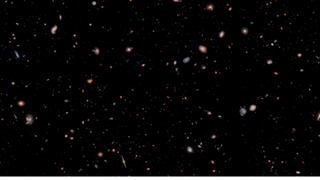
The video is the result of data collected by the Cosmic Evolution Early Release Science Survey (CEERS) and explores a region of space called the Extended Groth Strip. The Extended Groth Strip is located between the constellations of Ursa Major and Boötes and contains around 100,000 galaxies. It was extensively imaged by the Hubble Space Telescope between 2004 and 2005, and the new observations by the JWST build on the groundwork laid by Hubble .
Of particular interest to astronomers in this visualization is Maisie's Galaxy, serving as an example of the kind of early galaxy that the JWST is capable of studying. The powerful space telescope does this by observing the universe in infrared.
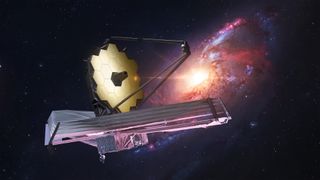
This is useful because as light from early galaxies travels billions of years to reach us, the expansion and the universe and the fact that it loses energy causes its wavelength to "stretch." This results in electromagnetic radiation that left the galaxies shortly after the Big Bang as optical light being " redshifted " down the electromagnetic spectrum past the red end of the visible light spectrum to infrared. The longer the light has traveled, the more extreme the redshift it experiences, making infrared the best way to see early galaxies.

Get the Space.com Newsletter
Breaking space news, the latest updates on rocket launches, skywatching events and more!
"This observatory just opens up this entire period of time for us to study," Rochester Institute of Technology researcher and CEERS investigator Rebecca Larson said in a statement . "We couldn't study galaxies like Maisie's before because we couldn't see them. Now, not only are we able to find them in our images, we're able to find out what they're made of and if they differ from the galaxies that we see close by."
— Saturn's rings look gorgeous in 1st James Webb Space Telescope photo of the gas giant
— James Webb Space Telescope spots violent collision between neutron stars
— James Webb Space Telescope detects most distant active supermassive black hole ever seen
The goal of investigations using the CEERS data will be to learn more about the formation of early galaxies.
"We're used to thinking of galaxies as smoothly growing," Finkelstein concluded. "But maybe these stars are forming like firecrackers. Are these galaxies forming more stars than expected? Are the stars they're making more massive than we expect? These data have given us the information to ask these questions. Now, we need more data to get those answers."
Join our Space Forums to keep talking space on the latest missions, night sky and more! And if you have a news tip, correction or comment, let us know at: [email protected].
Robert Lea is a science journalist in the U.K. whose articles have been published in Physics World, New Scientist, Astronomy Magazine, All About Space, Newsweek and ZME Science. He also writes about science communication for Elsevier and the European Journal of Physics. Rob holds a bachelor of science degree in physics and astronomy from the U.K.’s Open University. Follow him on Twitter @sciencef1rst.
The W boson caused a particle mystery — but scientists have cracked the case
Weird striped rock 'unlike any seen on Mars' found by Perseverance rover. Here's why NASA's excited
How to watch SpaceX's Crew-9 astronaut launch for NASA on Sept. 28
- tcallaha I think you mean “less than 3% of its current age”, not “less than a third of its current age”. 390/13,800=0.02826 Reply
- View All 1 Comment
Most Popular
- 2 This exoplanet circling a dead star may mirror Earth's fate — if our planet survives a dying sun, that is
- 3 'That's weird': James Webb Space Telescope spies a strange galaxy outshining its stars
- 4 Satellite images show Hurricane Helene gaining strength before Florida landfall (video)
- 5 Watch Hurricane Helene approach Florida in this NASA video from the ISS

Suggested Searches
- Climate Change
- Expedition 64
- Mars perseverance
- SpaceX Crew-2
- International Space Station
- View All Topics A-Z
Humans in Space
Earth & climate, the solar system, the universe, aeronautics, learning resources, news & events.
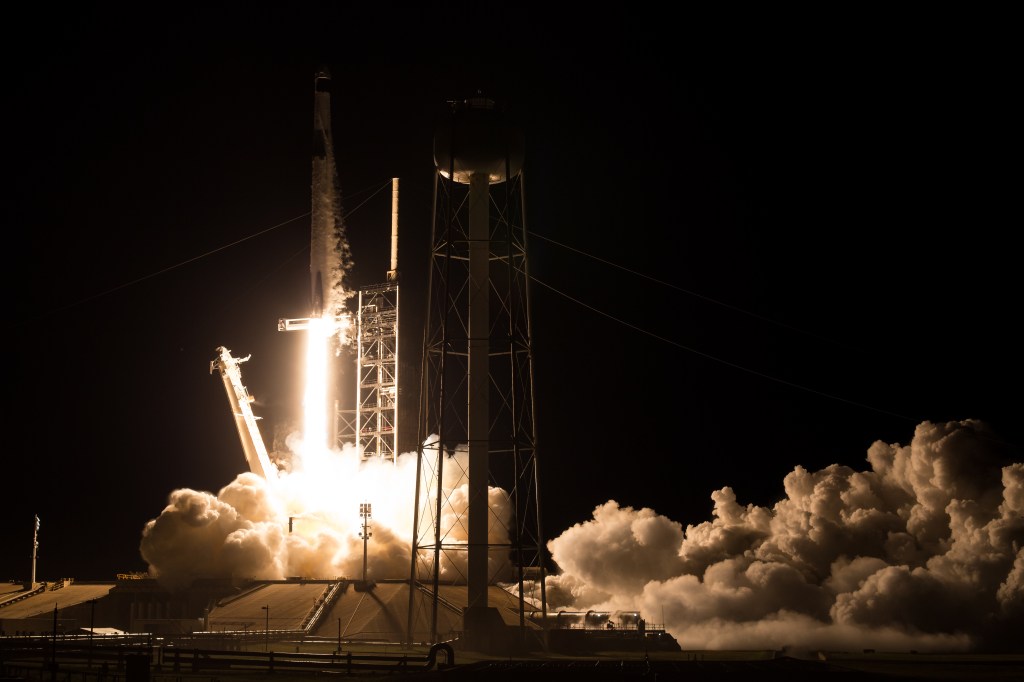
NASA Invites Public to Join as Virtual Guests for SpaceX Crew-9 Launch
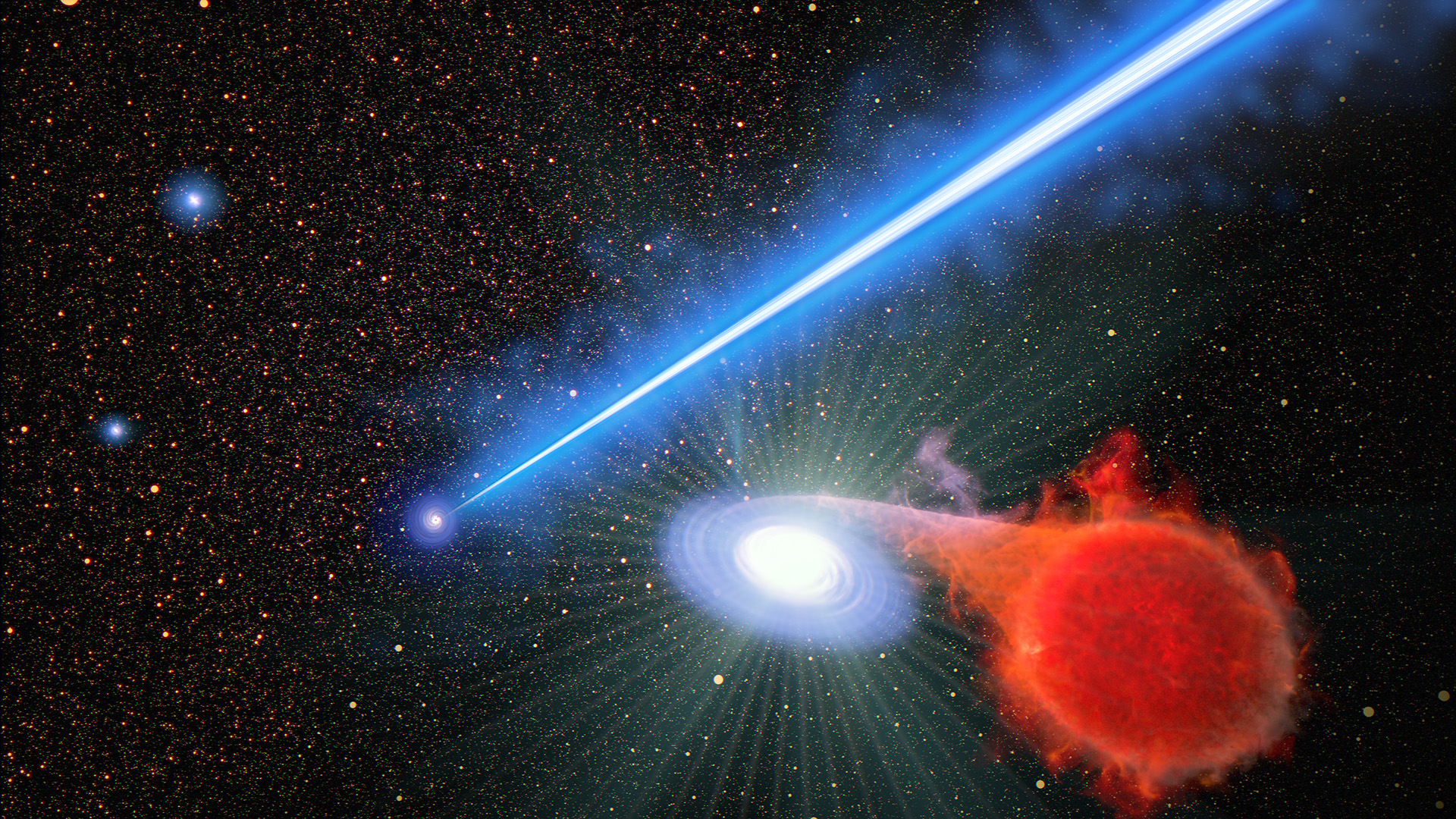
NASA’s Hubble Finds that a Black Hole Beam Promotes Stellar Eruptions

What’s Up: September 2024 Skywatching Tips from NASA
- Search All NASA Missions
- A to Z List of Missions
- Upcoming Launches and Landings
- Spaceships and Rockets
- Communicating with Missions
- James Webb Space Telescope
- Hubble Space Telescope
- Why Go to Space
- Commercial Space
- Destinations
- Living in Space
- Explore Earth Science
- Earth, Our Planet
- Earth Science in Action
- Earth Multimedia
- Earth Science Researchers
- Pluto & Dwarf Planets
- Asteroids, Comets & Meteors
- The Kuiper Belt
- The Oort Cloud
- Skywatching
- The Search for Life in the Universe
- Black Holes
- The Big Bang
- Dark Energy & Dark Matter
- Earth Science
- Planetary Science
- Astrophysics & Space Science
- The Sun & Heliophysics
- Biological & Physical Sciences
- Lunar Science
- Citizen Science
- Astromaterials
- Aeronautics Research
- Human Space Travel Research
- Science in the Air
- NASA Aircraft
- Flight Innovation
- Supersonic Flight
- Air Traffic Solutions
- Green Aviation Tech
- Drones & You
- Technology Transfer & Spinoffs
- Space Travel Technology
- Technology Living in Space
- Manufacturing and Materials
- Science Instruments
- For Kids and Students
- For Educators
- For Colleges and Universities
- For Professionals
- Science for Everyone
- Requests for Exhibits, Artifacts, or Speakers
- STEM Engagement at NASA
- NASA's Impacts
- Centers and Facilities
- Directorates
- Organizations
- People of NASA
- Internships
- Our History
- Doing Business with NASA
- Get Involved
NASA en Español
- Aeronáutica
- Ciencias Terrestres
- Sistema Solar
- All NASA News
- Video Series on NASA+
- Newsletters
- Social Media
- Media Resources
- Upcoming Launches & Landings
- Virtual Guest Program
- Image of the Day
- Sounds and Ringtones
- Interactives
- STEM Multimedia
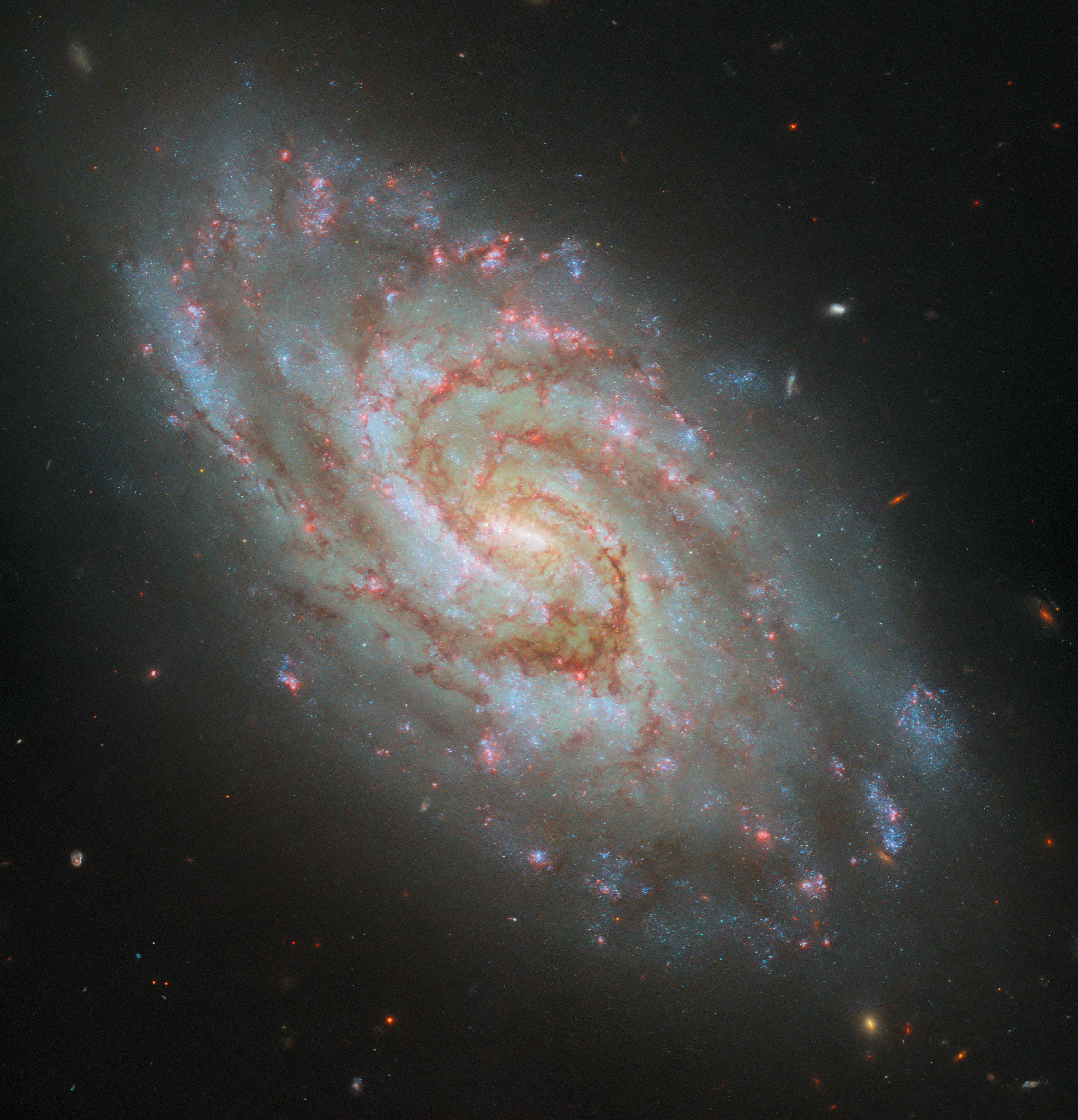
Hubble Captures Stellar Nurseries in a Majestic Spiral
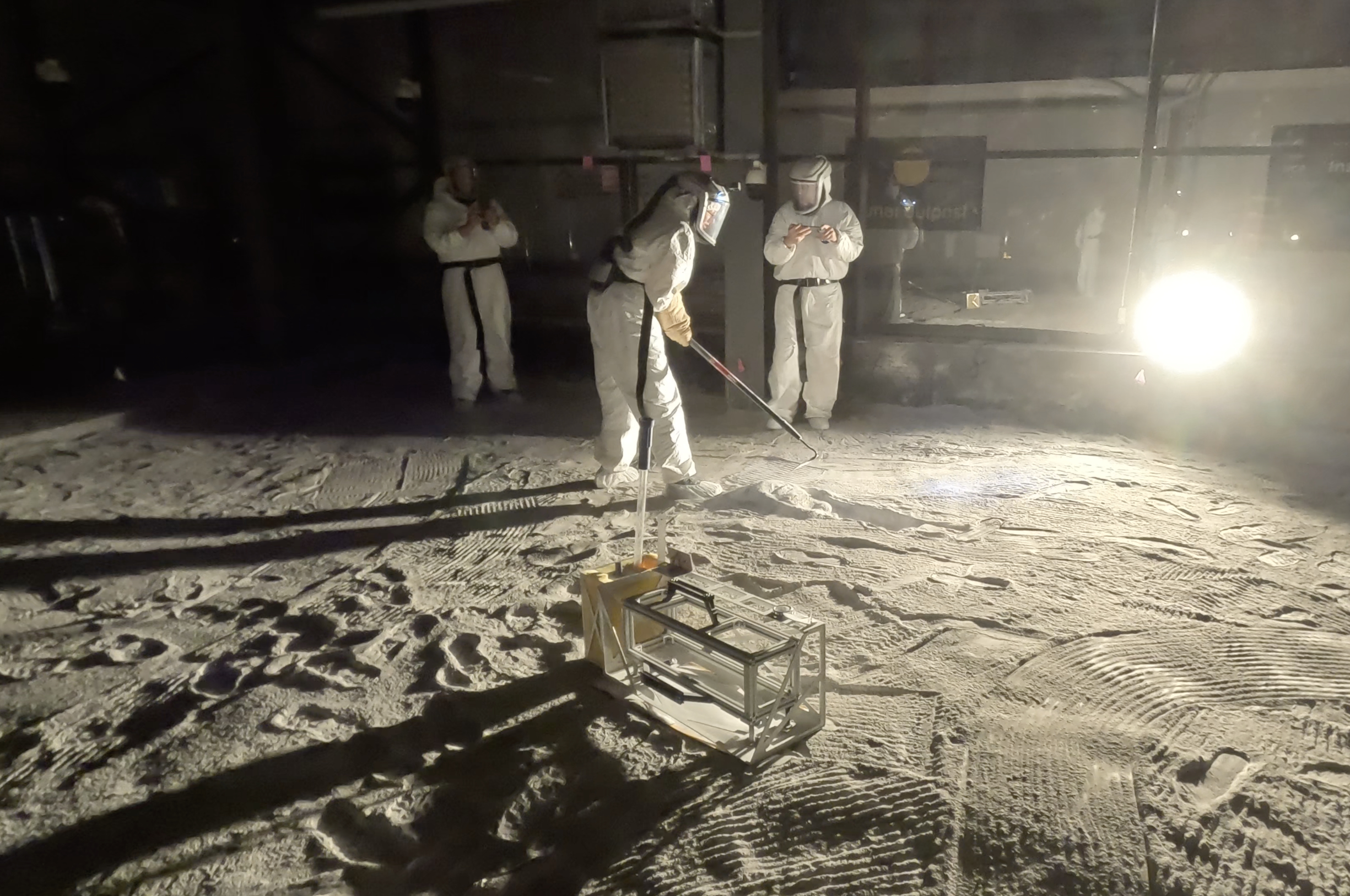
NASA’s Artemis Science Instrument Gets Tested in Moon-Like Sandbox
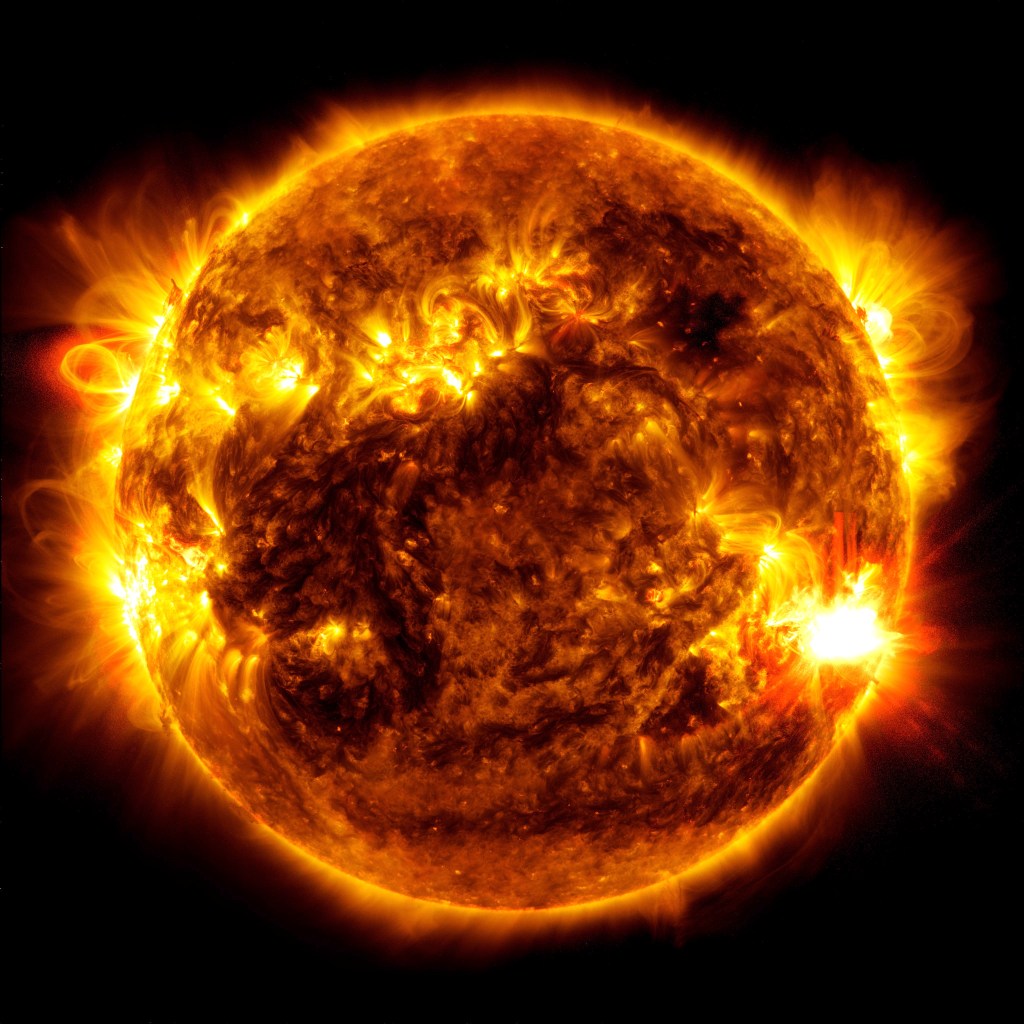
NASA’s BioSentinel Studies Solar Radiation as Earth Watches Aurora
Educational activities in space.

NASA Astronaut Tracy C. Dyson’s Scientific Mission aboard Space Station
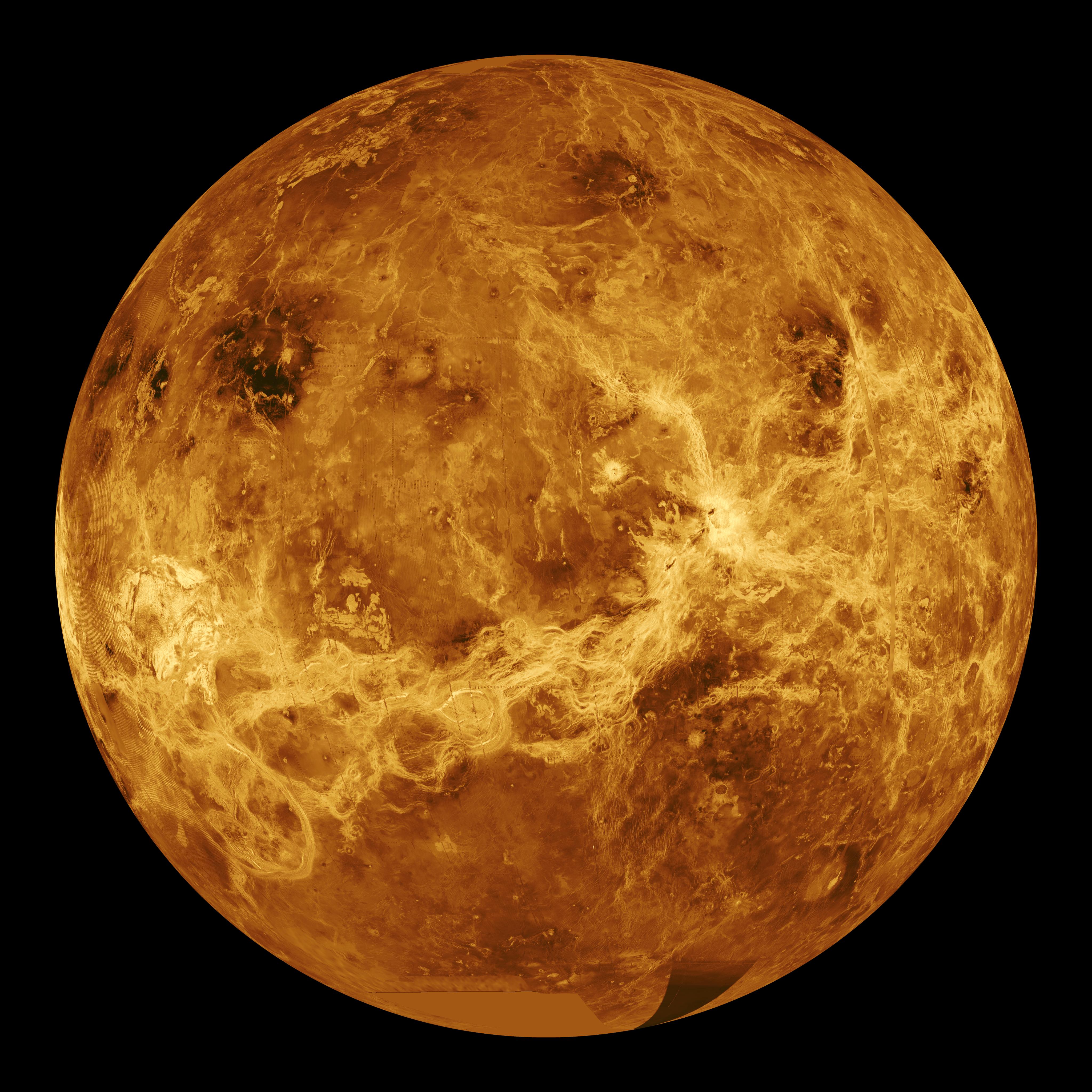
Amendment 55: F.20 MOSAICS Seed Funding Winter 2025 review Cut-Off Date Extended.
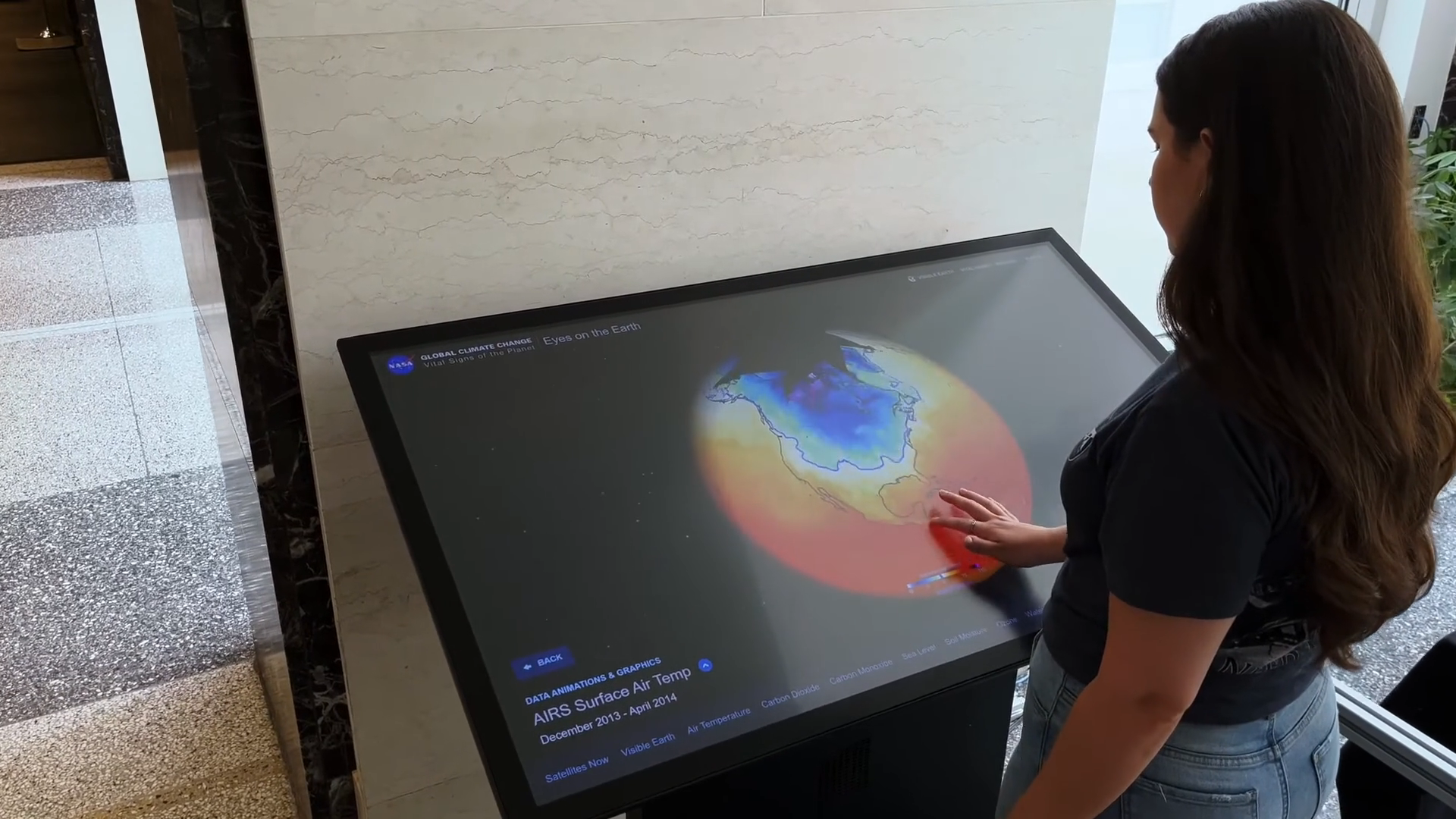
NASA’s Eyes for Museums

NASA Analysis Shows Irreversible Sea Level Rise for Pacific Islands
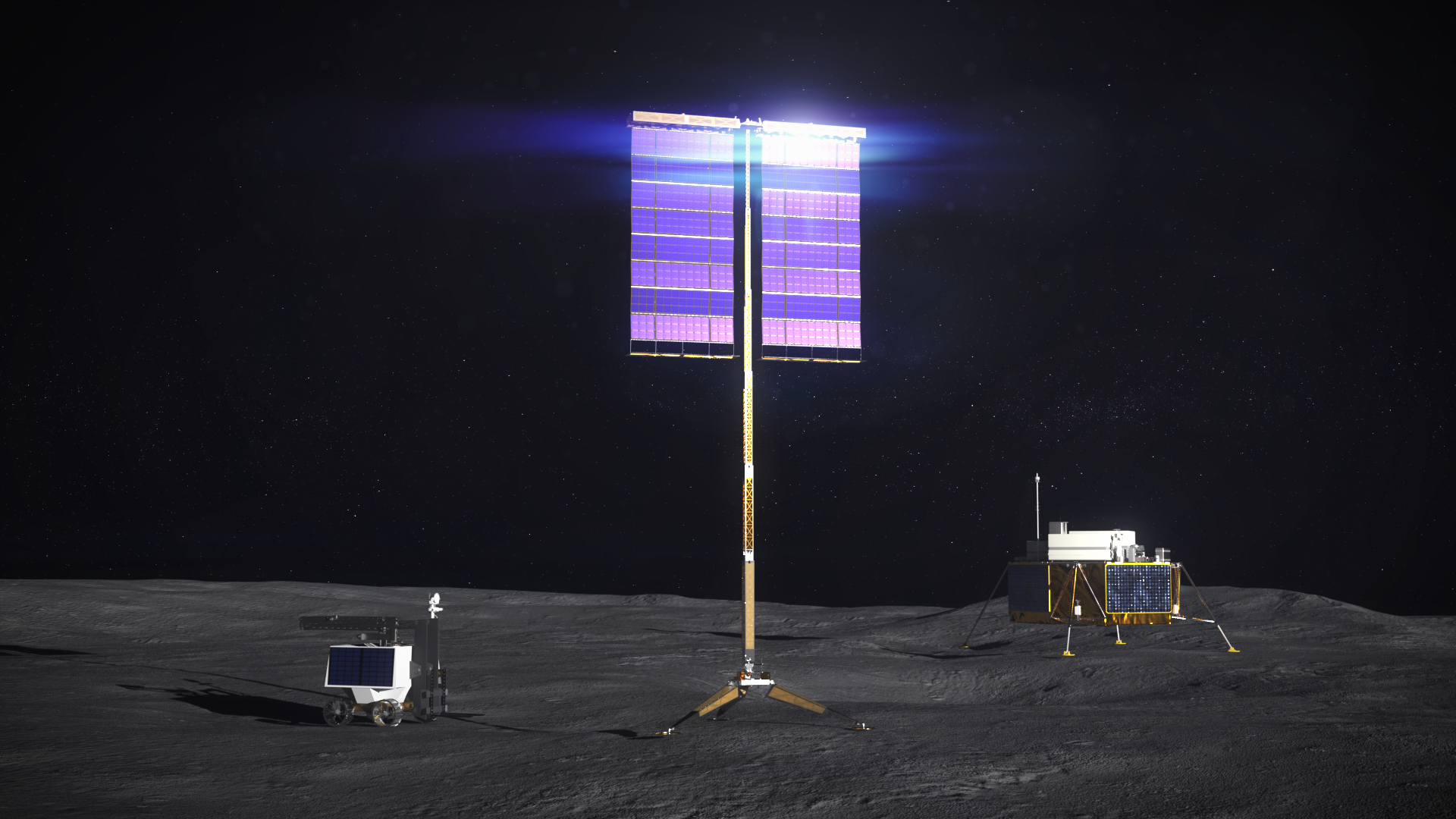
How NASA Uses and Improves Solar Power

Backyard Worlds: Cool Neighbors
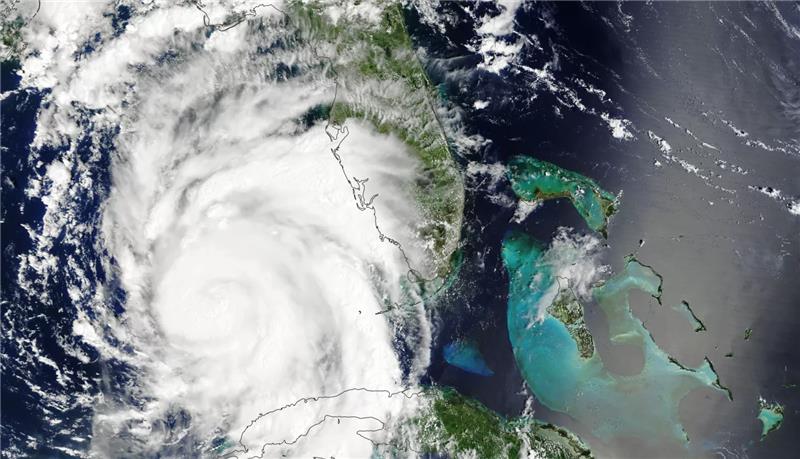
Amendment 56: A.24 Weather and Atmospheric Dynamics NURTURE Campaign Schedule Change
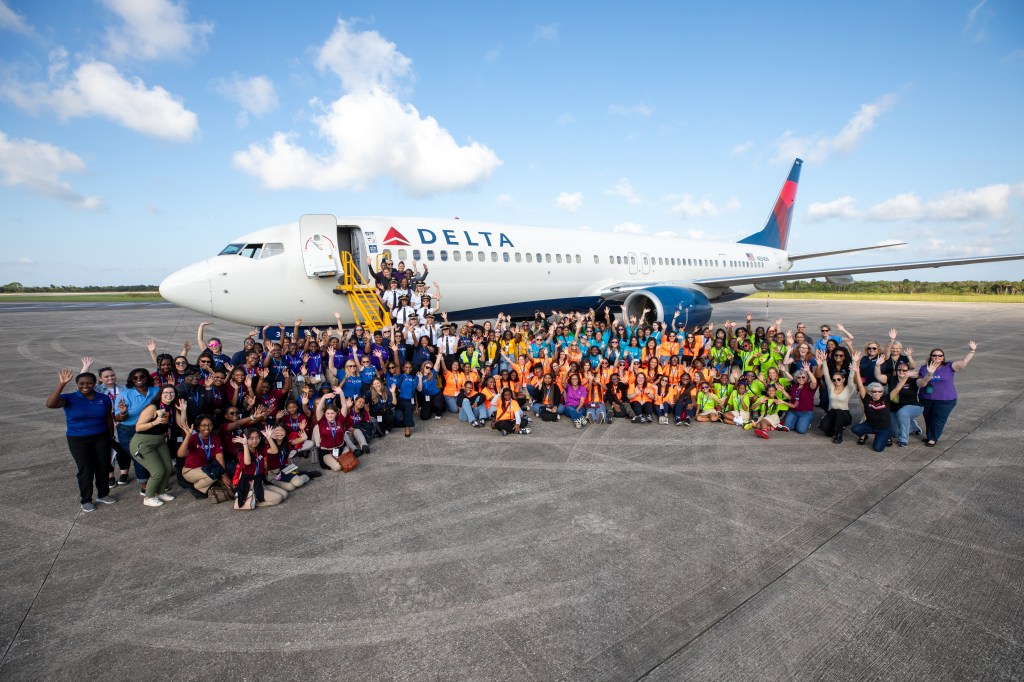
Girls in STEM Inspired to Fly High at NASA Kennedy

ARMD Solicitations

Students Soar at NASA Glenn’s Aviation Day

The Science of the Perfect Cup for Coffee
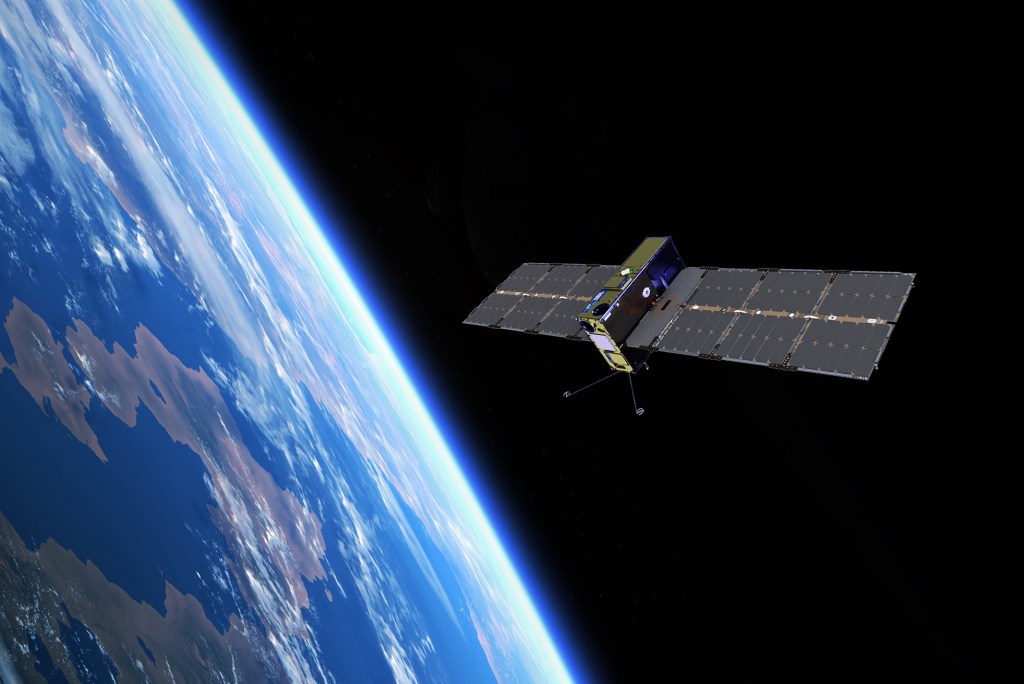
NASA’s Record-Breaking Laser Demo Completes Mission
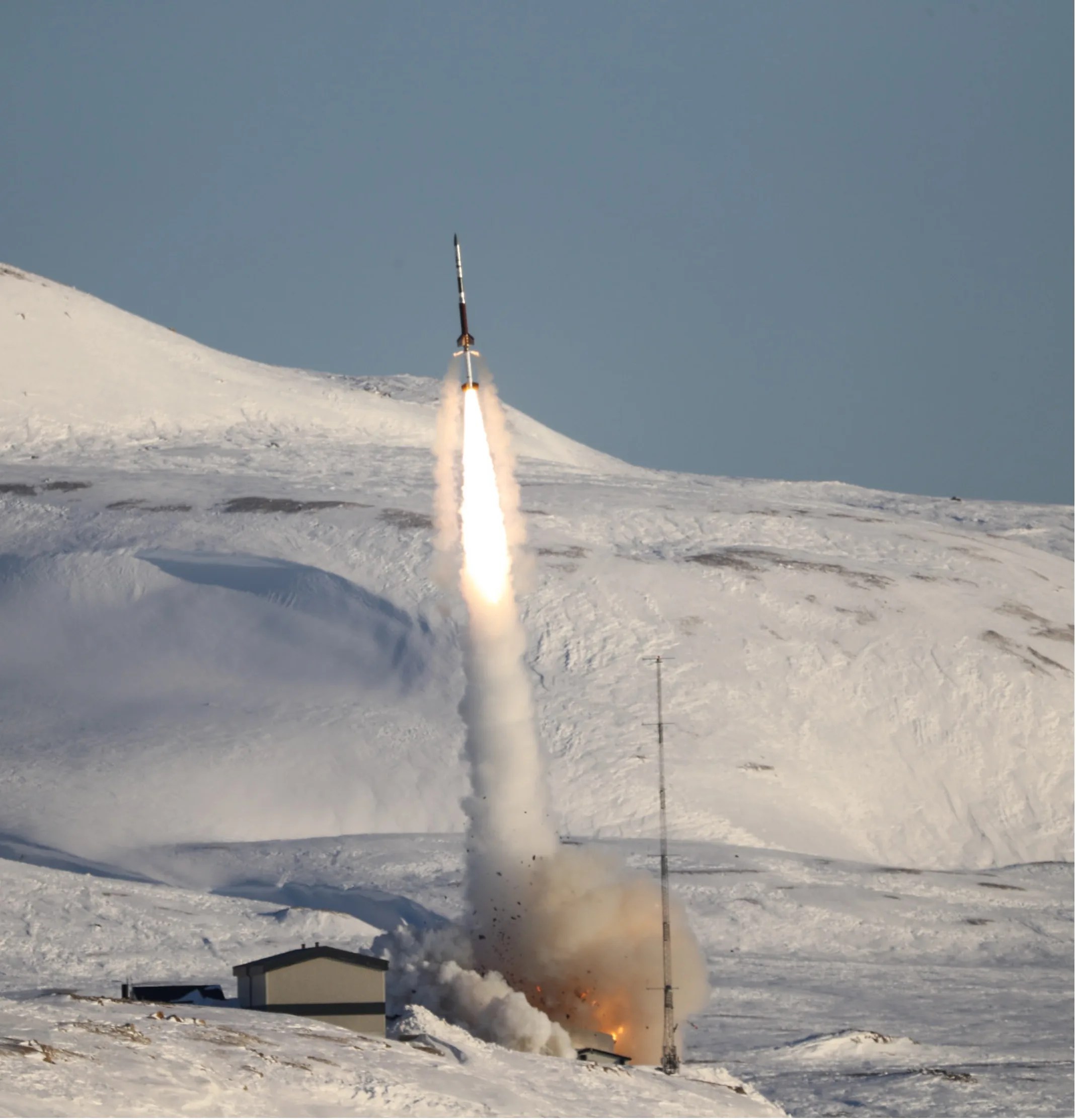
Amendment 52: B.9 Low-Cost Access to Space 2028 Peruvian campaign Update

NASA Moon to Mars Architecture Art Challenge
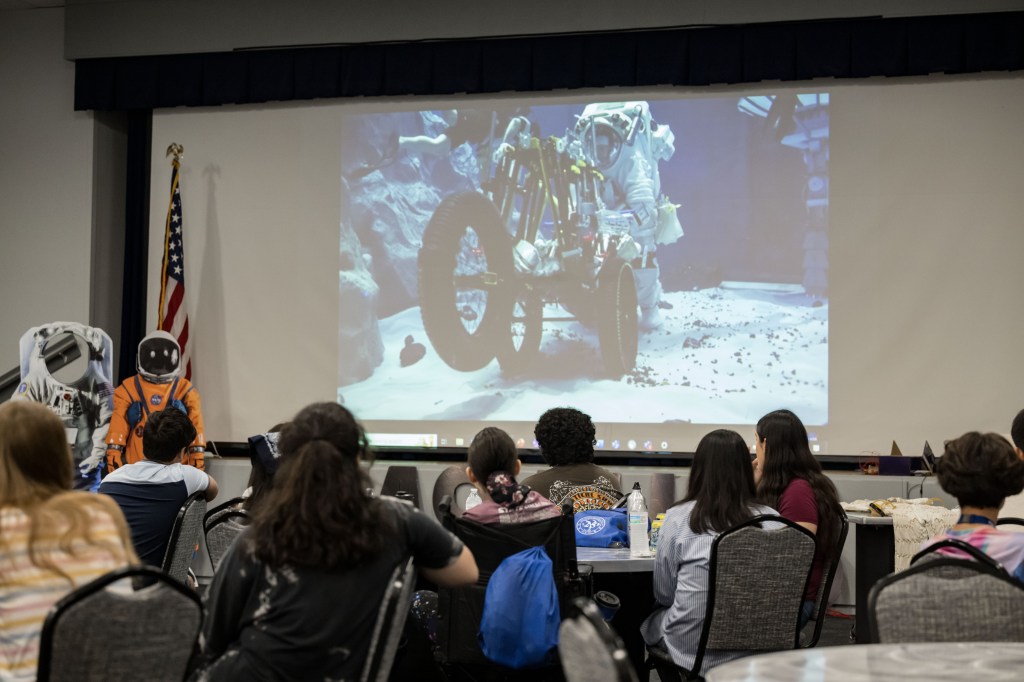
Bring NASA Into Your Classroom This Fall Through Virtual Experiences

How Do I Navigate NASA Learning Resources and Opportunities?

Getting SSPICY: NASA Funds Orbital Debris Inspection Mission
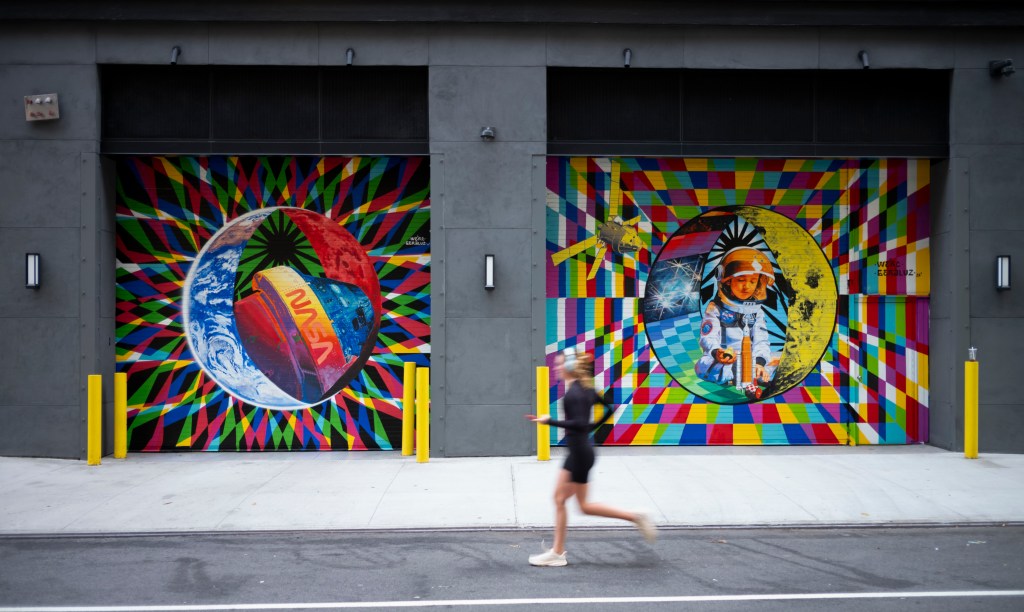
NASA Relaunches Art Program with Space-Themed Murals

La NASA invita a los medios al lanzamiento de Europa Clipper

El X-59 de la NASA avanza en las pruebas de preparación para volar

La NASA invita a creadores de las redes sociales al lanzamiento de la misión Europa Clipper
To view this video please enable JavaScript, and consider upgrading to a web browser that supports HTML5 video
SPACE OUT: Solaris
Explore the surface of Mars, fly through a solar flare, and bask in the glow of a Uranian sunset. Turn on, tune in, and space out to relaxing music and […]
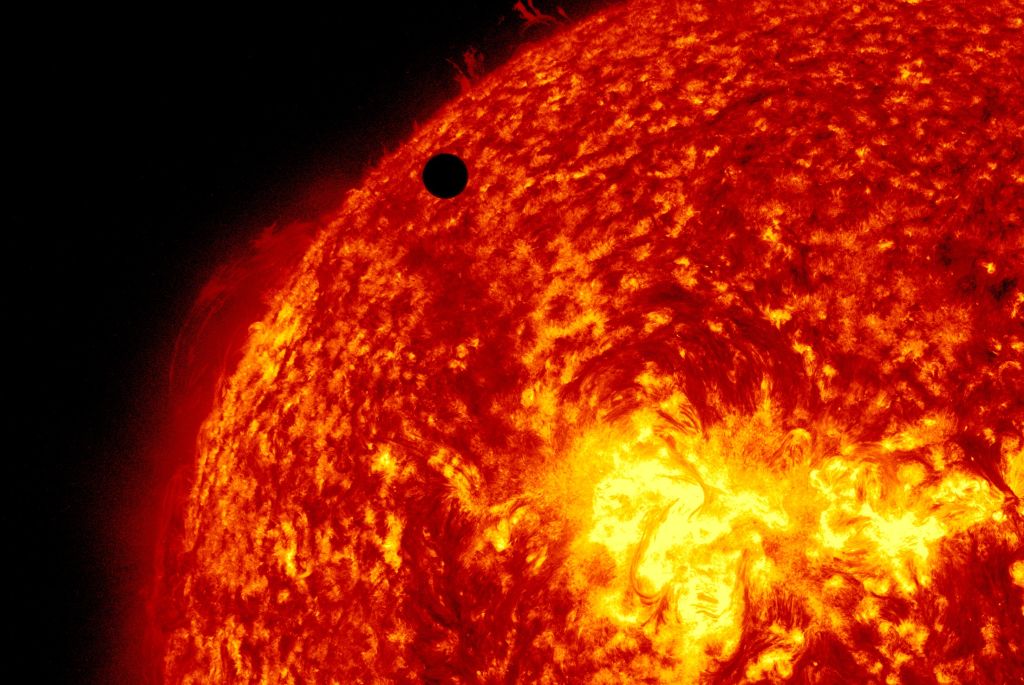
- NASA & Chill

- WhatsApp https://plus.nasa.gov/video/space-out-solaris/ Copy URL to clipboard> Share
Explore the surface of Mars, fly through a solar flare, and bask in the glow of a Uranian sunset. Turn on, tune in, and space out to relaxing music and stunning ultra high-definition visuals of our cosmic neighborhood.
SPACE OUT: Hubble
Space out: uranian sunset, space out: moon phases, space out: rings of saturn.
- Page Last Updated: Sep 28, 2024
- Responsible NASA Official: Rebecca Sirmons

Voyager 1 and Voyager 2
Where are they now.
Both Voyager 1 and Voyager 2 have reached "interstellar space" and each continue their unique journey deeper into the cosmos. In NASA's Eyes on the Solar System app, you can see the actual spacecraft trajectories of the Voyagers updated every five minutes.
Mission Status
Instrument status.
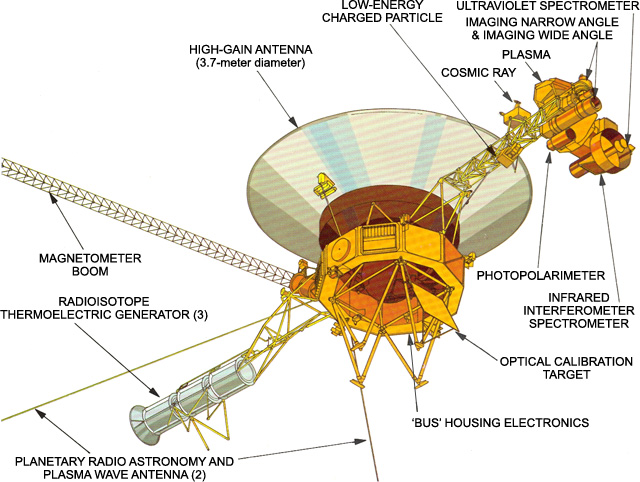
Voyager 1 Present Position
Voyager 2 present position, discover more topics from nasa.

UK Edition Change
- UK Politics
- News Videos
- Paris 2024 Olympics
- Rugby Union
- Sport Videos
- John Rentoul
- Mary Dejevsky
- Andrew Grice
- Sean O’Grady
- Photography
- Theatre & Dance
- Culture Videos
- Fitness & Wellbeing
- Food & Drink
- Health & Families
- Royal Family
- Electric Vehicles
- Car Insurance Deals
- Lifestyle Videos
- Hotel Reviews
- News & Advice
- Simon Calder
- Australia & New Zealand
- South America
- C. America & Caribbean
- Middle East
- Politics Explained
- News Analysis
- Today’s Edition
- Home & Garden
- Broadband deals
- Fashion & Beauty
- Travel & Outdoors
- Sports & Fitness
- Climate 100
- Sustainable Living
- Climate Videos
- Solar Panels
- Behind The Headlines
- On The Ground
- Decomplicated
- You Ask The Questions
- Binge Watch
- Travel Smart
- Watch on your TV
- Crosswords & Puzzles
- Most Commented
- Newsletters
- Ask Me Anything
- Virtual Events
- Wine Offers
- Betting Sites
- Casino Sites
Thank you for registering
Please refresh the page or navigate to another page on the site to be automatically logged in Please refresh your browser to be logged in
Nasa reveals the future of space travel in incredible sci-fi video
The fictional exoplanet travel bureau arranges kayaking on titan or skydiving on exoplanet hd 40307 g, article bookmarked.
Find your bookmarks in your Independent Premium section, under my profile

Sign up to our free weekly IndyTech newsletter delivered straight to your inbox
Sign up to our free indytech newsletter, thanks for signing up to the indytech email.
Nasa has shared its vision for human space exploration in the future in a new sci-fi video.
The minute-long ‘Visions of the Future’ short shows holiday destinations booked through the Exoplanet Travel Bureau, such as the Moon , and Mars .
Venus has a futuristic observation deck – looking like an ice cream cone with a large glass come over it – while Enceladus, one of Saturn’s moons , is orbited by a metal bubble with a family inside gazing at the ringed planet.
Another astronaut kayaks on one of Saturn’s other moons, Titan, and yet another skydives into the exoplanet HD 40307 g , which was discovered to be a potential ‘super-Earth’ that could have a life-supporting climate and even water.
The video was inspired by a series of travel posters created by Nasa’s Jet Propulsion Lab, with the agency sharing a series of behind-the-scenes shots showing the before-and-after of green screen technology.
Human exploration of other planets has seemingly become a closer reality with the development of private space travel, although many have criticised the billionaires responsible for failing to help those struggling on Earth or tackle climate change.
SpaceX CEO Elon Musk has said that he plans to send the first craft to Mars by 2022, with humans following in the next four to six years .
“I’d say six years from now, highly confident [that humans will travel to Mars]. If we get lucky, maybe four years, and then we’re going to try and send an uncrewed vehicle there in two years,” he said in December 2020.
“I’m mostly concerned with developing the technology that can enable a lot of people to go to Mars and make life multi-planetary, have a base on the moon, a city on Mars, and I think it’s important that we strive to have a self-sustaining city on Mars as soon as possible.”
The billionaire believes that terraforming - blasting the planet with nuclear weapons at its poles to cause the ice caps to melt and induce accelerated warming – will be a key component to live on other planets.
“Life in glass domes at first. Eventually, terraformed to support life, like Earth,” he said.
However, the path to another world will not be easy. "A bunch of people will probably die in the beginning", he said candidly in an interview in April 2021. Even if humans do get to Mars the battle between these corporations and Earth governments to develop Martian laws will be intense , and unlikely to be resolved quickly.
Join our commenting forum
Join thought-provoking conversations, follow other Independent readers and see their replies
Subscribe to Independent Premium to bookmark this article
Want to bookmark your favourite articles and stories to read or reference later? Start your Independent Premium subscription today.
New to The Independent?
Or if you would prefer:
Hi {{indy.fullName}}
- My Independent Premium
- Account details
- Help centre
- Search Please fill out this field.
- Manage Your Subscription
- Give a Gift Subscription
- Newsletters
- Sweepstakes
- Space Travel + Astronomy
13 Things Tourists Should Know Before Traveling to Space, According to Astronauts
We asked the pros for their best tips on handling a first trip to space.
:max_bytes(150000):strip_icc():format(webp)/Stefanie-Waldek-7eed18a8c9734cb28c5d887eb583f816.jpg)
For most of human spaceflight history, those lucky enough to reach the stars were professional astronauts hired and trained by government agencies around the world. But since the early 2000s, when seven intrepid travelers paid millions to spend a few days aboard the International Space Station (ISS), space tourism has begun to take off. We're now on the cusp of a new era of space exploration, with commercial companies like Virgin Galactic and Blue Origin launching spacecraft capable of taking paying travelers beyond the Earth's surface.
We spoke with former NASA astronauts Leroy Chiao and Scott Parazynski to get their tips for first-time spaceflight participants. During his 15 years with NASA, Chiao participated in four missions — three aboard the space shuttle and one to the ISS, in which he served as commander. Parazynski worked at NASA for 17 years, flying five shuttle missions throughout his career. Read on to discover what they think aspiring space tourists need to know.
Your only job on the flight will be to kick back, relax, and enjoy the ride.
If you're taking a suborbital flight, which is what companies like Virgin Galactic and Blue Origin have offered, your ride will be a quick up-and-down to reach space, rather than a full orbit of the Earth. The short journey is relatively easy compared to what professional astronauts experience. For starters, you won't need to worry about flying your spacecraft. That's all up to the spaceflight provider. "You won't have any responsibility other than to enjoy the experience — and not kick anyone else in the head," says Parazynski. "Their obligations on the flight are pretty straightforward."
As such, the training programs for suborbital space tourist experiences are relatively minimal, perhaps only a few days in length at most. "The downside of not having a lot of training is that you don't have the confidence that comes from lots of training," says Parazynski. "Contrast that with the training I had on the space shuttle, where we trained for hundreds and hundreds of hours for launching in space. If something were to go awry, we would know exactly what to do and our hearts wouldn't skip a beat."
So, other than learning to place your complete trust in your spaceflight provider, Parazynski recommends talking to people who have flown before in order to ease any nervousness. Chiao agrees: "The best advice I can give on launch — and it's easy to say, harder to do — is to try to relax and enjoy the whole process," he says. "Pay attention during your training, talk to other people who've been there if you can. And actually, you might be surprised — it's quite calm!"
Make sure you’re physically and mentally fit.
"I think people should treat this as their Olympics or Super Bowl. This is a really big life experience, and though you don't need to be an Olympic athlete or a Super Bowl champion to fly in space, it helps to be fit," says Parazynski. After all, your body will be experiencing quite a range of new sensations during your spaceflight."
But it's not just about physical fitness — mental fitness is key, too. "I think through fitness comes mental acuity as well," says Parazynski. "The more you can be engaged in the experience, the more you'll remember of it — it'll be more impactful to you."
The G-forces experienced on launch and reentry are not as intense as you might expect.
If you've ever watched a livestream of an astronaut launch, caught any Hollywood flick about space travel, or ridden Mission: Space at Walt Disney World's Epcot theme park, you know that during launch, astronauts get crushed back into their seats. (And, actually, during reentry, too!) They're experiencing strong G-forces, or a sensation of weight felt during acceleration. It's the same feeling you get when you speed up quickly in a car or zoom through a loop or a sharp curve on a roller coaster, but during a rocket launch, those forces are stronger and more sustained. While the experience might seem a little terrifying, the pros say it's quite manageable.
"The G-forces aren't nearly as bad as they show in the movies," says Chiao. "If you're good enough to be given medical approval to go on a trip like this, you're not going to have any problems handling the G-forces." He also notes that you'll likely go through centrifugal runs during your training to prep for the sensation — you'll be strapped into a spinning machine that lets you experience strong G-forces, just like that spinning amusement park ride where you're pressed against the wall and the floor drops.
But to make launch and reentry as comfortable on your body as possible, you'll want to physically relax your muscles so you don't fight against the G-forces. "If you relax and let your body sink into the launch couch, you're going to tolerate it much better," says Chiao. "If you're rigid, that's where you might hurt yourself. And make sure your limbs and arms are inside of the couch."
To prep for weightlessness, you should book a zero-gravity flight.
While it takes quite a bit of effort (and time and money) to get into space to experience weightlessness, you can actually experience the sensation right here on Earth — or rather, just slightly above it. All you need to do is book a zero-gravity flight , where a plane flies in a series of parabolas (or arch-like shapes) during which passengers experience simulated weightlessness through free fall.
It's physically the same as skydiving or even riding a roller coaster, but in those two instances, your senses tell you you're actually falling. "When you're in a zero-G airplane, the airplane is falling at the same rate you are, so you're floating inside the airplane," says Chiao. "That's what it's like in a spacecraft when you get up into space and the engines cut off."
Through commercial companies like the Zero Gravity Corporation , anyone who can spare the cost of a ticket can experience weightlessness — and anyone who's planning on making a trip to space should definitely give it a go. "If they have the means, they should get on a zero-G flight before they go on a suborbital flight," says Parazynski. "It would take some of the mystery out of 'what am I going to feel like?' and 'how do I move?'"
Learning how to scuba dive is good weightlessness training, too.
While being underwater isn't exactly like floating in space, it's a pretty good way to practice moving around in a weightless environment. In fact, NASA even has a life-sized replica of the ISS set inside a giant pool, so astronauts can train for spacewalks underwater.
"Moving in weightlessness comes to you very quickly when you spend some time underwater," says Parazynski. "Get neutrally buoyant underwater and very gently try and move yourself along the ocean floor or bottom of your pool. It doesn't take a lot of force, but it does take a lot of thought."
Come up with a game plan for your few minutes in space.
On suborbital flights, you're only going to have a few minutes in weightlessness, so you should plan exactly how you want to spend your time up there. Figure out if you'd like to bring a memento like a family photo or college pennant for a fun picture. (U.S. Naval Academy graduates and former astronauts Wally Schirra and Tom Stafford famously put a "Beat Army" sign in the window of their Gemini VI spacecraft, so there's a long tradition of this.) Decide in advance if you want to attempt what spaceflight veterans call "stupid astronaut tricks," like flips or spins. But most importantly, budget time to look out the window.
"The most important thing I would tell future astronauts is to savor the view out the window," says Parazynski. "It's, for lack of a better term, a God's-eye view, and so few people have ever had a chance to see it. It's really a beautiful thing to be hovering in space and looking down at your planet."
Don’t worry about taking your own photos.
"As far as taking photographs, I don't know that I would recommend it," says Chiao. "You're not going to be very good at it, first of all, because it takes a little bit of practice to get used to zero-G. Don't waste that time taking photos. Get your memories, look out those windows, and enjoy the whole experience of being weightless." Plus, given the price tag of these spaceflights, we're pretty sure that your operator will provide you with photos and videos of your journey anyway.
When you get into zero gravity, you might feel a little dizzy.
The body functions a bit differently when you remove gravity from the equation for a sustained period of time, and side effects may include dizziness and nausea. "You're going to feel full-headed because there's no longer gravity pulling fluid down into your legs," says Chiao. "And so all that fluid comes up into your torso, and you can feel it right away. It feels kind of like you're standing on your head."
But the good news is, on suborbital flights you might be able to avoid the worst of it. "The adrenaline and excitement are going to make you do OK at first, and by the time you might start feeling bad, it's time to strap back in and come back down," says Chiao.
If you’re spending a few days in space, be prepared for some bumps and bruises.
On a suborbital flight, you won't have a ton of time in space, so you won't really have to worry about acclimating to zero gravity. However, some private spaceflight companies are looking to send their clients up into orbit for longer stays and there are even talks of a space hotel within Voyager Station . If you're going to spend a few days or even a few weeks up in space, you're probably going to bump your head more than once, no matter how much you've trained for the experience.
"It's really funny watching rookie astronauts the first day or two up on a mission," says Parazynski. "We called them the bull in a china shop. They push off with full force and they crack their skull or bang their knee."
You’re also going to make a mess.
Doing routine tasks like brushing your teeth (you can't just spit your toothpaste into a sink), clipping your fingernails (you don't want them floating off into your space station), and going to the bathroom (have you ever thought about how to use a toilet without gravity?) are all very different experiences in weightlessness. Inevitably, you might have a few mishaps early on in your trip.
"Just sitting down for a meal, you put your fork down, and it's gone in 30 seconds," says Parazynski. "You may find it two days later in the cabin air cleaner because that's where the air currents have taken it." Luckily, a lost fork is an easy mess to clean up — and the situation can be prevented by tethering it down. Other messes are a different story.
"As far as using the restroom, that's what you need to pay attention to during your training. The toilet is not particularly simple and you have to be careful," says Chiao. (In case you were wondering, space toilets use airflow to guide things where they're supposed to go.) "But be prepared to make some messes," says Chiao. "And everybody has to clean up their own mess."
If you’re going to do a spacewalk, the stakes are much higher for you and your crew.
If you want to zip around space with a jetpack like George Clooney in "Gravity," sorry, but chances are that's not going to happen any time soon. Most private astronauts will be safely tucked inside their craft for the duration of their flight.
Unlike suborbital flights, future orbital flights with a spacewalk will require extensive training, given that spacewalks are inherently more dangerous than simply riding in a vessel. "If you're careless with your tethers and you float off into the void, there's not a whole lot anyone can come do for you," says Parazynski. It's possible that a crewmate may be able to head out to rescue you, but then you're endangering their life as well. "It's paramount for a spacewalker to think not just about their own health and well-being and their experience, but also that of their crewmates," he says.
If you’re in a capsule, be prepared for a bumpy landing.
While the only way up to space is by rocket, there are two ways to come back down: via a winged vehicle, like the space shuttle or Virgin Galactic's SpaceShipTwo, or a capsule, like Apollo, Soyuz, and Blue Origin's New Shepard. The experiences are quite different, as winged vehicles land like an airplane on a runway, whereas capsules descend beneath parachutes onto land or water. While both experience a range of G-forces during reentry, capsules have a bit of a rougher ride, particularly at the very end.
"When the parachute comes out, you can expect to get jostled around a fair amount, so that can be disorienting," says Chiao. "Then, whether you're hitting the water or the ground, you're gonna get a good bump. There are shock-absorbing mechanisms, of course, that make it not too big a deal. But on Soyuz, you smack the ground pretty darn hard. It was kind of surprising!"
It’ll be worth every penny.
Sure, it's going to cost a small fortune to go into space as a tourist — for now, that's somewhere in the ballpark of several hundred thousand dollars for a suborbital flight and millions of dollars for longer-duration orbital stays. But ask any astronaut, and they're sure to tell you it'll be worth the investment.
"What I would tell prospective astronauts is that it's going to change their lives forever," says Parazynski. "It's a perspective that can't be captured in emotion on film. Even in 3D IMAX, there's no way to capture the way it's going to make you feel, the connectedness you feel to planet Earth, and the awe you have when you look out into the universe."
Related Articles
- Subscribe to BBC Science Focus Magazine
- Previous Issues
- Future tech
- Everyday science
- Planet Earth
- Newsletters
© Getty Images
Everything you need to know about space travel (almost)
We're a long way from home...
Paul Parsons
When did we first start exploring space?
The first human-made object to go into space was a German V2 missile , launched on a test flight in 1942. Although uncrewed, it reached an altitude of 189km (117 miles).
Former Nazi rocket scientists were later recruited by both America and Russia (often at gunpoint in the latter case), where they were instrumental in developing Intercontinental Ballistic Missiles (ICBMs) – rockets capable of carrying nuclear weapons from one side of the planet to the other.

It was these super-missiles that formed the basis for the space programmes of both post-war superpowers. As it happened, Russia was the first to reach Earth orbit, when it launched the uncrewed Sputnik 1 in October 1957, followed a month later by Sputnik 2, carrying the dog Laika – the first live animal in space.
The USA sent its first uncrewed satellite, Explorer 1, into orbit soon after, in January 1958. A slew of robotic spaceflights followed, from both sides of the Atlantic, before Russian cosmonaut Yuri Gagarin piloted Vostok 1 into orbit on 12 April 1961, to become the first human being in space . And from there the space race proper began, culminating in Neil Armstrong and Buzz Aldrin becoming the first people to walk on the Moon as part of NASA's Apollo programme .
Why is space travel important?
Space exploration is the future. It satisfies the human urge to explore and to travel, and in the years and decades to come it could even provide our species with new places to call home – especially relevant now, as Earth becomes increasingly crowded .
Extending our reach into space is also necessary for the advancement of science. Space telescopes like the Hubble Space Telescope and probes to the distant worlds of the Solar System are continually updating, and occasionally revolutionising, our understanding of astronomy and physics.
- Subscribe to the Science Focus Podcast on these services: Acast , iTunes , Stitcher , RSS , Overcast
But there are also some very practical reasons, such as mining asteroids for materials that are extremely rare here on Earth.
One example is the huge reserve of the chemical isotope helium-3 thought to be locked away in the soil on the surface of the Moon . This isotope is a potential fuel for future nuclear fusion reactors – power stations that tap into the same source of energy as the Sun. Unlike other fusion fuels, helium-3 gives off no hard-to-contain and deadly neutron radiation.
However, for this to happen the first challenge to overcome is how to build a base on the Moon. In 2019, China's Chang’e 4 mission marked the beginning of a new space race to conquer the Moon, signalling their intent to build a permanent lunar base , while the NASA Artemis mission plans to build a space station, called Lunar Orbital Platform-Gateway , providing a platform to ferry astronauts to the Moon's surface.
Could humans travel into interstellar space and how would we get there?
It’s entirely feasible that human explorers will visit the furthest reaches of our Solar System. The stars, however, are another matter. Interstellar space is so vast that it takes light – the fastest thing we know of in the Universe – years, centuries and millennia to traverse it. Faster-than-light travel may be possible one day, but is unlikely to become a reality in our lifetimes.
It’s not impossible that humans might one day cross this cosmic gulf, though it won’t be easy. The combustion-powered rocket engines of today certainly aren’t up to the job – they just don’t use fuel efficiently enough. Instead, interstellar spacecraft may create a rocket-like propulsion jet using electric and magnetic fields. This so-called ‘ ion drive ’ technology has already been tested aboard uncrewed Solar System probes.

Another possibility is to push spacecraft off towards the stars using the light from a high-powered laser . A consortium of scientists calling themselves Breakthrough Starshot is already planning to send a flotilla of tiny robotic probes to our nearest star, Proxima Centauri, using just this method.
Though whether human astronauts could survive such punishing acceleration, or the decades-long journey through deep space, remains to be seen.
How do we benefit from space exploration?
Pushing forward the frontiers of science is the stated goal of many space missions . But even the development of space travel technology itself can lead to unintended yet beneficial ‘spin-off’ technologies with some very down-to-earth applications.
Notable spin-offs from the US space programme, NASA, include memory foam mattresses, artificial hearts, and the lubricant spray WD-40. Doubtless, there are many more to come.
Read more about space exploration:
- The next giant leaps: The UK missions getting us to the Moon
- Move over, Mars: why we should look further afield for future human colonies
- Everything you need to know about the Voyager mission
- 6 out-of-this-world experiments recreating space on Earth
Space exploration also instils a sense of wonder, it reminds us that there are issues beyond our humdrum planet and its petty squabbles, and without doubt it helps to inspire each new generation of young scientists. It’s also an insurance policy. We’re now all too aware that global calamities can and do happen – for instance, climate change and the giant asteroid that smashed into the Earth 65 million years ago, leading to the total extinction of the dinosaurs .
The lesson for the human species is that we keep all our eggs in one basket at our peril. On the other hand, a healthy space programme, and the means to travel to other worlds, gives us an out.
Is space travel dangerous?
In short, yes – very. Reaching orbit means accelerating up to around 28,000kph (17,000mph, or 22 times the speed of sound ). If anything goes wrong at that speed, it’s seldom good news.
Then there’s the growing cloud of space junk to contend with in Earth's orbit – defunct satellites, discarded rocket stages and other detritus – all moving just as fast. A five-gram bolt hitting at orbital speed packs as much energy as a 200kg weight dropped from the top of an 18-storey building.

And getting to space is just the start of the danger. The principal hazard once there is cancer-producing radiation – the typical dose from one day in space is equivalent to what you’d receive over an entire year back on Earth, thanks to the planet’s atmosphere and protective magnetic field.
Add to that the icy cold airless vacuum , the need to bring all your own food and water, plus the effects of long-duration weightlessness on bone density, the brain and muscular condition – including that of the heart – and it soon becomes clear that venturing into space really isn’t for the faint-hearted.
When will space travel be available to everyone?
It’s already happening – that is, assuming your pockets are deep enough. The first self-funded ‘space tourist’ was US businessman Dennis Tito, who in 2001 spent a week aboard the International Space Station (ISS) for the cool sum of $20m (£15m).
Virgin Galactic has long been promising to take customers on short sub-orbital hops into space – where passengers get to experience rocket propulsion and several minutes of weightlessness, before gliding back to a runway landing on Earth, all for $250k (£190k). In late July 2020, the company unveiled the finished cabin in its SpaceShipTwo vehicle, suggesting that commercial spaceflights may begin shortly.

Meanwhile, Elon Musk’s SpaceX , which in May 2020 became the first private company to launch a human crew to Earth orbit aboard the Crew Dragon , plans to offer stays on the ISS for $35k (£27k) per night. SpaceX is now prototyping its huge Starship vehicle , which is designed to take 100 passengers from Earth to as far afield as Mars for around $20k (£15k) per head. Musk stated in January that he hoped to be operating 1,000 Starships by 2050.
10 Short Lessons in Space Travel by Paul Parsons is out now (£9.99, Michael O'Mara)
- Buy now from Amazon UK , Foyles , WH Smith and Wordery
Share this article

- Terms & Conditions
- Privacy policy
- Cookies policy
- Code of conduct
- Magazine subscriptions
- Manage preferences
- Skip to main content
- Keyboard shortcuts for audio player

Meet the astronauts preparing to travel farther from Earth than any human before

Scott Detrow
Michael Levitt

Ashley Brown
How the crew of NASA's Artemis II prepares for a mission to the moon

From left to right: Astronauts Reid Wiseman, Jeremy Hansen and Christina Koch settle in inside the Orion spacecraft mockup. Danielle Villasana for NPR hide caption
NASA’s Orion space capsule is not a place you would describe as “roomy.”
The not-quite-cone-shaped spacecraft is about 12 feet across on the inside, and, aside from the center that slants up toward a hatch door, it's mostly less than 5 feet tall. Moving around it — in gravity at least — is an awkward process of crouching and ducking.
"“It's a lot bigger in 3D, when you can float around," mission specialist Christina Koch says. "That's what I'm telling myself.”
As soon as a year from now, Koch will be in that chrome-colored capsule, flying toward the moon at thousands of feet per second. She and two of the four total Artemis II crew members were available on a recent late-August day to show NPR how they're preparing for their mission around the moon and back, which will be the first human flight to Earth's satellite in more than half a century.

A new 'mini-moon' comes to Earth this fall
The capsule Koch and other NASA employees showed NPR isn't the real thing, though. It's a full-scale training mockup at the Johnson Space Center in Houston, where the crew has been spending hours at a time familiarizing themselves with the layout and running through the paces of their upcoming mission.
Mission commander Reid Wiseman explains a dizzying panel of screens, knobs and switches. He points to the velocity monitor.

The Orion Mission Simulator where crews can perform integrated mission simulations. Danielle Villasana for NPR hide caption
“When we leave planet Earth we’re zero miles an hour and when we hit low-Earth orbit we're doing 17,000 miles an hour. And then when we come back into the atmosphere we’re doing 39 times the speed of sound, 25,000 miles per hour.” Wiseman says. “Crazy numbers."
This time next year, if all goes according to plan, Wiseman will command a key moment in NASA's Artemis program. Over the course of 10 days, the crew will travel to the moon, swing around its orbit, and slingshot back to Earth.
A history-making mission, for multiple reasons
Along with Koch and Wiseman, mission specialist Jeremy Hansen and pilot Victor Glover round out the crew. Koch, Hansen and Glover will be the first woman, Canadian and Black astronauts, respectively, to head to the moon.
The mission’s high ambitions also come with equally high stakes, as the spacecraft is designed to travel more than 250,000 miles, taking them farther away from Earth than any human before, all while moving at incredible speeds.
This mission is the second phase of NASA’s broader Artemis program: the first sent the Orion space capsule along this path uncrewed in 2022. The goal of Artemis II will be to test out the Orion capsule and all the other equipment, so that by 2026, Artemis III can put astronauts back on the moon.
The program's overall ambitions go far beyond replicating NASA's Apollo glory days.
"The goal is not just to go back to the moon," NASA Administrator Bill Nelson told NPR in May . "The goal is to go to the moon to learn so we can go farther to Mars and beyond. Now it so happens that we're going to go to a different part of the moon. We'll go into the South Pole, and that is attractive because we know there's ice there in the crevices of the rocks in the constant shadow or darkness. And if in fact there is water, then we [can create hydrogen] rocket fuel."

Christina Koch runs through the plans as Reid Wiseman listens. Danielle Villasana for NPR hide caption

Cardboard cutouts of the Artemis II crew next to the Orion spacecraft mockup. Danielle Villasana for NPR hide caption
The further the plans stretch out, the more they may seem like science fiction. A key eventual component of Artemis will be a moon-orbiting space station.
But first, NASA needs to make sure it can get a human crew to the moon and back. That's where the four Artemis II astronauts come in.
They've been training since April 2023, spending hours inside the mockup capsule, practicing the various physical tasks they'll need to carry out on the mission. That means hours of looking around its small interior, thinking about what it will be like to share the space with three other people.
The astronauts laugh knowingly when asked about this, because for all the high-level science they're cramming on, they're intently focused on this human chemistry, too.
"We just have to trust each other," Wiseman says.
The crew has spent a lot of time talking intentionally about how to give each other the personal space they'll need during the high-stress mission.
“If I can't physically go to a different space, because we're all in the same ‘Hershey kiss’ together, then I can put on my headphones and that's my way to signal [to the rest of the crew] that I'm in my cabin right now," says Koch, giving one example.
A peek into the high-stakes training
Training has taken the astronauts to the Pacific Ocean, where they've practiced how they'll get out of the capsule and into helicopters after their mission ends in a splash down. They've hiked in Iceland , to learn more about the volcanic geology they'll be observing on the lunar surface.
The most critical training, though, happens in the high-tech simulator on the Johnson Space Center campus — the same building that has housed simulators going back to NASA's Gemini program.

Software engineer Jonathan Zahn monitors the Orion Engineering Simulator screens inside the Beta Dome. Danielle Villasana for NPR hide caption
“The goal in this building is to serve the needs of the flight control team, to train them so that if they have a bad day in the real mission, it's like automatic to them,” says Grace Lauderdale, the simulator manager for the Orion, where she heads a team of NASA engineers, physicists and computer scientists. Lauderdale and her team come up with different scenarios that have one unexpected problem or another flare up at different points, so that if and when something does go wrong in space, it isn't unexpected.
The windows of the simulator are fitted with monitors that display a digital rendering of Earth, the moon and stars. The astronauts can then use the controls to operate simulated thrusters and virtually fly through space, practicing the rocket burns and docking maneuvers they'll eventually carry out while orbiting Earth.

NASA will bring stranded astronauts back on SpaceX — not Boeing's Starliner
“The purpose is to train the crew in all of the devices that they have to interact with during a mission,” Lauderdale explains. “The training team takes that simulation and creates all of the training scenarios in order to train the crew, train the flight controllers, to work as a team to understand what they need to do in case something goes wrong.”
And things can and do go wrong in space exploration. The world got a vivid reminder of that reality this summer: Two NASA astronauts, Butch Wilmore and Suni Williams, will end up spending eight months on the International Space Station — instead of their initially planned eight days — because of problems with the Boeing Starliner capsule they were testing.
Artemis II is a much more complicated endeavor than Starliner, so if anything goes wrong for the Artemis II crew between Earth and the moon, the contingency plans are much more limited.

Reid Wiseman demonstrates what he and his crew will be doing inside the Orion spacecraft during their mission. Danielle Villasana for NPR hide caption
“There isn't this kind of backup system because they're going to be very far away,” says Moribah Jah, a professor of aerospace engineering and engineering mechanics at UT Austin.
“We don't have more of these Orions just sitting on shelves to go launch and rendezvous with them and all this other stuff. They're going to have to figure it out or not.”
And the high stakes and limited room for error is exactly why preparation on the ground is so essential.
“Part of the preparation of going to do something like this is understanding that there's a … very real chance you don't come back,” says mission specialist Jeremy Hansen. “We're trying to understand the risks that we're taking and make an intentional decision to accept that risk or not accept that risk. And I feel really good about this program and the leadership and their courage to make hard decisions.”
How the crew feels about ‘a supreme responsibility’
Assuming everything goes according to plan, though, the crew has quite the to-do list — and quite the view.
"Our primary task is observing, observing the moon," said Koch. "Our job is to tell the scientists back home the things that lunar probes can't see or tell. And that is, what colors do human eyes see? What observations, large scale, do we see? And we're being trained to do just that, to describe and observe."
"It's a supreme responsibility to have eyes on the far side of the moon," she adds.

A NASA probe is about to launch to an icy moon that could have life
Which leads to a key question: how often is the Artemis II crew overwhelmed by the magnitude of their upcoming task?
"I like to allow space for that every once in a while," says Koch. " And for me, allowing about two seconds every couple of months is enough. The enormity when it hits me is there and it's important, but for the most part, I'm focusing on the mission and my role in it, just like any other mission."
Wiseman admits that he sometimes dwells on it for a little more than two seconds at a time, including a recent night where he couldn’t easily get to sleep, "thinking about riding this gigantic rocket, going all the way out to the moon with Christina, Victor, Jeremy, and I had to get up and go for a walk around my living room for a second because I just couldn't get myself back into the mode of going to sleep. And I knew I needed to rest. But sometimes it does. Sometimes it hits you.”

From left to right: Astronauts Jeremy Hansen, Christina Koch and Reid Wiseman with the Orion spacecraft mockup. Danielle Villasana for NPR hide caption
Besides the enormity of the mission, after more than half a century some Artemis II crew members also say going back to the moon feels long overdue.
"For me, when I look at humanity and the call to explore that humans have put out there, we were always going to go back to the moon and go back to stay," says Koch. "There was never a time in our history as a species when that wasn't going to happen, when we weren't going to push further. And so our role is just really answering that call."
Correction Sept. 28, 2024
A previous description of this story said the mission was NASA's first crewed mission to the moon. The mission is NASA's first crewed mission to the moon in over 50 years.
- - K-town Now
- Asia-Pacific
- - Storm Tracker
- Middle East
- Map of Memorials
- Entertainment
- - Video Games
- Europe Travel
- - Quick Trips
- - After Hours
- Pacific Travel
- The Meat and Potatoes of Life
- U.S. Travel
- Storm Tracker
- Rewards for readers
- Get Stripes
- Stripes Lite
- Archives/Library
- Special Publications
- Mobile Apps
- Email Newsletters
- Digital Access
- Home Delivery
- Marine Corps
- Coast Guard
- Space Force
- Archive photo of the day
- - Schedules Europe
- - Scoreboards Europe
- - Schedules Pacific
- - Scoreboards Pacific
- - Pacific Sports Blog
- - WW II Podcast
- - Military Matters
- - Force for Hire
- Out of Uniform
- - WW II Videos
- Communities
- Stripes Europe
- Stripes Guam
- Stripes Japan
- Stripes Korea
- Stripes Okinawa
- Our Other Websites
- In Memoriam
- Month of the Military Child
- Best of the Pacific
- Letters to Santa
SpaceX launches rescue mission for 2 NASA astronauts who are stuck in space until next year

In this image released by NASA, NASA astronauts Suni Williams and Butch Wilmore, both Expedition 71 Flight Engineers, make pizza aboard the International Space Station’s galley located inside the Unity module on Sept. 9, 2024. Items are attached to the galley using tape and velcro to keep them from flying away in the microgravity environment. (NASA via AP)
CAPE CANAVERAL, Fla. — SpaceX launched a rescue mission for the two stuck astronauts at the International Space Station on Saturday, sending up a downsized crew to bring them home but not until next year.
The capsule rocketed into orbit to fetch the test pilots whose Boeing spacecraft returned to Earth empty earlier this month because of safety concerns. The switch in rides left it to NASA’s Nick Hague and Russia’s Alexander Gorbunov to retrieve Butch Wilmore and Suni Williams.
Because NASA rotates space station crews approximately every six months, this newly launched flight with two empty seats reserved for Wilmore and Williams won’t return until late February. Officials said there wasn’t a way to bring them back earlier on SpaceX without interrupting other scheduled missions.
By the time they return, the pair will have logged more than eight months in space. They expected to be gone just a week when they signed up for Boeing’s first astronaut flight that launched in June.
NASA ultimately decided that Boeing’s Starliner was too risky after a cascade of thruster troubles and helium leaks marred its trip to the orbiting complex. The space agency cut two astronauts from this SpaceX launch to make room on the Dragon capsule’s return leg for Wilmore and Williams.
Wilmore and Williams watched the liftoff via a live link sent to the space station, prompting a cheer of “Go Dragon!” from Williams, NASA deputy program manager Dina Contella said.
Williams has been promoted to commander of the space station, which will soon be back to its normal population of seven. Once Hague and Gorbunov arrive on Sunday, four astronauts living there since March can leave in their own SpaceX capsule. Their homecoming was delayed a month by Starliner’s turmoil.
Hague noted before the flight that change is the one constant in human spaceflight.
“There’s always something that is changing. Maybe this time it’s been a little more visible to the public,” he said.
Hague was thrust into the commander’s job for the rescue mission based on his experience and handling of a launch emergency six years ago. The Russian rocket failed shortly after liftoff, and the capsule carrying him and a cosmonaut catapulted off the top to safety.
Rookie NASA astronaut Zena Cardman and veteran space flier Stephanie Wilson were pulled from this flight after NASA opted to go with SpaceX to bring the stuck astronauts home. Promised a future space mission, both were at NASA’s Kennedy Space Center, taking part in the launch livestream. Gorbunov remained on the flight under an exchange agreement between NASA and the Russian Space Agency.
“Every crewed launch that I have ever watched has really brought me a lot of emotion. This one today was especially unique,” a teary-eyed Cardman said following the early afternoon liftoff. “It was hard not to watch that rocket lift off without thinking, ‘That’s my rocket and that’s my crew.’ “
Moments before liftoff, Hague paid tribute to his two colleagues left behind: “Unbreakable. We did it together.” Once in orbit, he called it a “sweet ride” and thanked everyone who made it possible.
Earlier, Hague acknowledged the challenges of launching with half a crew and returning with two astronauts trained on another spacecraft.
“We’ve got a dynamic challenge ahead of us,” Hague said after arriving from Houston last weekend. “We know each other and we’re professionals and we step up and do what’s asked of us.”
SpaceX has long been the leader in NASA’s commercial crew program, established as the space shuttles were retiring more than a decade ago. SpaceX beat Boeing in delivering astronauts to the space station in 2020, and it is now up to 10 crew flights for NASA.
Boeing has struggled with a variety of issues over the years, repeating a Starliner test flight with no one on board after the first one veered off course. The Starliner that left Wilmore and Williams in space landed without any issues in the New Mexico desert on Sept. 6, and has since returned to Kennedy Space Center. A week ago, Boeing’s defense and space chief was replaced.
Delayed by Hurricane Helene pounding Florida, the latest SpaceX liftoff marked the first for astronauts from Launch Complex 40 at Cape Canaveral Space Force Station. SpaceX took over the old Titan rocket pad nearly two decades ago and used it for satellite and station cargo launches, while flying crews from Kennedy’s former Apollo and shuttle pad next door. The company wanted more flexibility as more Falcon rockets soared.
The Associated Press Health and Science Department receives support from the Howard Hughes Medical Institute’s Science and Educational Media Group. The AP is solely responsible for all content.
previous coverage
- Capsule carrying 2 Russians and 1 American heads to Earth from space station
related stories
- Soyuz capsule with 2 Russians and 1 American from International Space Station returns to Earth
Sign Up for Daily Headlines
Sign up to receive a daily email of today's top military news stories from Stars and Stripes and top news outlets from around the world.
Sign Up Now
- Live In The D
- Newsletters
SpaceX launches rescue mission for 2 NASA astronauts who are stuck in space until next year
Marcia Dunn
Associated Press
Copyright 2024 The Associated Press. All rights reserved.
NASA astronaut Nick Hague, right, talks to his family members as Roscosmos cosmonaut Aleksandr Gorbunov looks on after leaving the Operations and Checkout building for a trip to the launch pad 40 Saturday, Sept. 28, 2024, at the Kennedy Space Center in Cape Canaveral, Fla. Two astronauts are beginning a mission to the International Space Station. (AP Photo/Chris O'Meara)
CAPE CANAVERAL, Fla. – SpaceX launched a rescue mission for the two stuck astronauts at the International Space Station on Saturday, sending up a downsized crew to bring them home but not until next year.
The capsule rocketed into orbit to fetch the test pilots whose Boeing spacecraft returned to Earth empty earlier this month because of safety concerns. The switch in rides left it to NASA’s Nick Hague and Russia’s Alexander Gorbunov to retrieve Butch Wilmore and Suni Williams .
Recommended Videos
Because NASA rotates space station crews approximately every six months, this newly launched flight with two empty seats reserved for Wilmore and Williams won’t return until late February. Officials said there wasn’t a way to bring them back earlier on SpaceX without interrupting other scheduled missions.
By the time they return, the pair will have logged more than eight months in space. They expected to be gone just a week when they signed up for Boeing’s first astronaut flight that launched in June.
NASA ultimately decided that Boeing’s Starliner was too risky after a cascade of thruster troubles and helium leaks marred its trip to the orbiting complex. The space agency cut two astronauts from this SpaceX launch to make room on the Dragon capsule's return leg for Wilmore and Williams.
Wilmore and Williams watched the liftoff via a live link sent to the space station, prompting a cheer of “Go Dragon!” from Williams, NASA deputy program manager Dina Contella said.
Williams has been promoted to commander of the space station, which will soon be back to its normal population of seven. Once Hague and Gorbunov arrive on Sunday, four astronauts living there since March can leave in their own SpaceX capsule. Their homecoming was delayed a month by Starliner’s turmoil.
Hague noted before the flight that change is the one constant in human spaceflight.
“There’s always something that is changing. Maybe this time it’s been a little more visible to the public,” he said.
Hague was thrust into the commander’s job for the rescue mission based on his experience and handling of a launch emergency six years ago. The Russian rocket failed shortly after liftoff, and the capsule carrying him and a cosmonaut catapulted off the top to safety.
Rookie NASA astronaut Zena Cardman and veteran space flier Stephanie Wilson were pulled from this flight after NASA opted to go with SpaceX to bring the stuck astronauts home. Promised a future space mission, both were at NASA’s Kennedy Space Center, taking part in the launch livestream. Gorbunov remained on the flight under an exchange agreement between NASA and the Russian Space Agency.
“Every crewed launch that I have ever watched has really brought me a lot of emotion. This one today was especially unique,” a teary-eyed Cardman said following the early afternoon liftoff. “It was hard not to watch that rocket lift off without thinking, ‘That’s my rocket and that’s my crew.’ ”
Moments before liftoff, Hague paid tribute to his two colleagues left behind: “Unbreakable. We did it together.” Once in orbit, he called it a ”sweet ride” and thanked everyone who made it possible.
Earlier, Hague acknowledged the challenges of launching with half a crew and returning with two astronauts trained on another spacecraft.
“We’ve got a dynamic challenge ahead of us,” Hague said after arriving from Houston last weekend. “We know each other and we’re professionals and we step up and do what’s asked of us.”
SpaceX has long been the leader in NASA’s commercial crew program, established as the space shuttles were retiring more than a decade ago. SpaceX beat Boeing in delivering astronauts to the space station in 2020, and it is now up to 10 crew flights for NASA.
Boeing has struggled with a variety of issues over the years, repeating a Starliner test flight with no one on board after the first one veered off course. The Starliner that left Wilmore and Williams in space landed without any issues in the New Mexico desert on Sept. 6, and has since returned to Kennedy Space Center. A week ago, Boeing’s defense and space chief was replaced.
Delayed by Hurricane Helene pounding Florida, the latest SpaceX liftoff marked the first for astronauts from Launch Complex 40 at Cape Canaveral Space Force Station. SpaceX took over the old Titan rocket pad nearly two decades ago and used it for satellite and station cargo launches, while flying crews from Kennedy’s former Apollo and shuttle pad next door. The company wanted more flexibility as more Falcon rockets soared.
The Associated Press Health and Science Department receives support from the Howard Hughes Medical Institute’s Science and Educational Media Group. The AP is solely responsible for all content.
Copyright 2024 The Associated Press. All rights reserved. This material may not be published, broadcast, rewritten or redistributed without permission.
Click here to take a moment and familiarize yourself with our Community Guidelines.

Suggested Searches
- Climate Change
- Expedition 64
- Mars perseverance
- SpaceX Crew-2
- International Space Station
- View All Topics A-Z
Humans in Space
Earth & climate, the solar system, the universe, aeronautics, learning resources, news & events.

NASA Invites Public to Join as Virtual Guests for SpaceX Crew-9 Launch

NASA’s Hubble Finds that a Black Hole Beam Promotes Stellar Eruptions

What’s Up: September 2024 Skywatching Tips from NASA
- Search All NASA Missions
- A to Z List of Missions
- Upcoming Launches and Landings
- Spaceships and Rockets
- Communicating with Missions
- James Webb Space Telescope
- Hubble Space Telescope
- Why Go to Space
- Commercial Space
- Destinations
- Living in Space
- Explore Earth Science
- Earth, Our Planet
- Earth Science in Action
- Earth Multimedia
- Earth Science Researchers
- Pluto & Dwarf Planets
- Asteroids, Comets & Meteors
- The Kuiper Belt
- The Oort Cloud
- Skywatching
- The Search for Life in the Universe
- Black Holes
- The Big Bang
- Dark Energy & Dark Matter
- Earth Science
- Planetary Science
- Astrophysics & Space Science
- The Sun & Heliophysics
- Biological & Physical Sciences
- Lunar Science
- Citizen Science
- Astromaterials
- Aeronautics Research
- Human Space Travel Research
- Science in the Air
- NASA Aircraft
- Flight Innovation
- Supersonic Flight
- Air Traffic Solutions
- Green Aviation Tech
- Drones & You
- Technology Transfer & Spinoffs
- Space Travel Technology
- Technology Living in Space
- Manufacturing and Materials
- Science Instruments
- For Kids and Students
- For Educators
- For Colleges and Universities
- For Professionals
- Science for Everyone
- Requests for Exhibits, Artifacts, or Speakers
- STEM Engagement at NASA
- NASA's Impacts
- Centers and Facilities
- Directorates
- Organizations
- People of NASA
- Internships
- Our History
- Doing Business with NASA
- Get Involved
NASA en Español
- Aeronáutica
- Ciencias Terrestres
- Sistema Solar
- All NASA News
- Video Series on NASA+
- Newsletters
- Social Media
- Media Resources
- Upcoming Launches & Landings
- Virtual Guest Program
- Image of the Day
- Sounds and Ringtones
- Interactives
- STEM Multimedia

Hubble Captures Stellar Nurseries in a Majestic Spiral

NASA’s Artemis Science Instrument Gets Tested in Moon-Like Sandbox

NASA’s BioSentinel Studies Solar Radiation as Earth Watches Aurora
Educational activities in space.

NASA Astronaut Tracy C. Dyson’s Scientific Mission aboard Space Station

Amendment 55: F.20 MOSAICS Seed Funding Winter 2025 review Cut-Off Date Extended.

NASA’s Eyes for Museums

NASA Analysis Shows Irreversible Sea Level Rise for Pacific Islands

How NASA Uses and Improves Solar Power

Amendment 56: A.24 Weather and Atmospheric Dynamics NURTURE Campaign Schedule Change
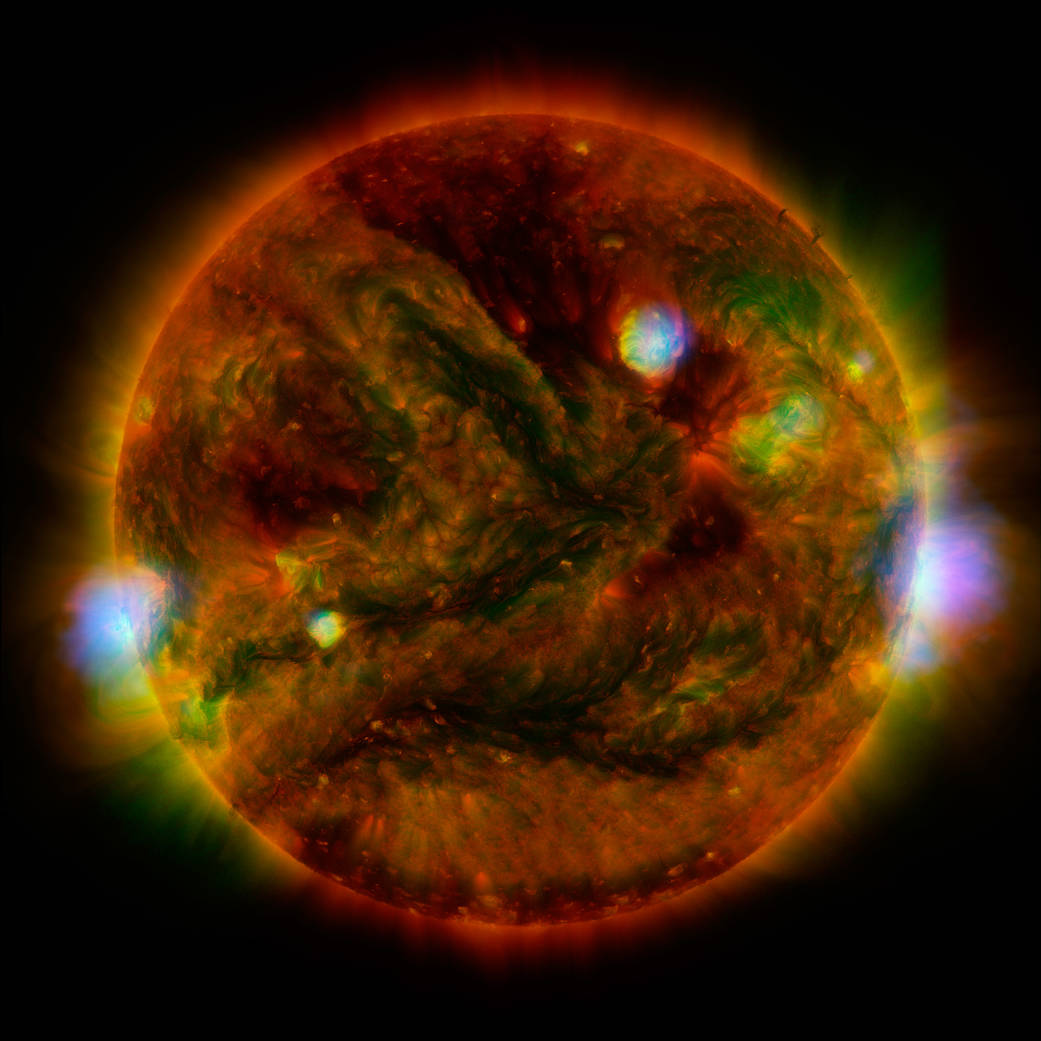
Amendment 54: D.9 NuSTAR Phase-1 Proposal Due Date Moved up to January 29, 2025, and Other Changes

Girls in STEM Inspired to Fly High at NASA Kennedy

ARMD Solicitations

Students Soar at NASA Glenn’s Aviation Day

The Science of the Perfect Cup for Coffee

NASA’s Record-Breaking Laser Demo Completes Mission

Amendment 52: B.9 Low-Cost Access to Space 2028 Peruvian campaign Update

NASA Moon to Mars Architecture Art Challenge

Bring NASA Into Your Classroom This Fall Through Virtual Experiences

How Do I Navigate NASA Learning Resources and Opportunities?

Getting SSPICY: NASA Funds Orbital Debris Inspection Mission

NASA Relaunches Art Program with Space-Themed Murals

La NASA invita a los medios al lanzamiento de Europa Clipper

El X-59 de la NASA avanza en las pruebas de preparación para volar

La NASA invita a creadores de las redes sociales al lanzamiento de la misión Europa Clipper
Three ways to travel at (nearly) the speed of light.

Katy Mersmann
1) electromagnetic fields, 2) magnetic explosions, 3) wave-particle interactions.
One hundred years ago today, on May 29, 1919, measurements of a solar eclipse offered verification for Einstein’s theory of general relativity. Even before that, Einstein had developed the theory of special relativity, which revolutionized the way we understand light. To this day, it provides guidance on understanding how particles move through space — a key area of research to keep spacecraft and astronauts safe from radiation.
The theory of special relativity showed that particles of light, photons, travel through a vacuum at a constant pace of 670,616,629 miles per hour — a speed that’s immensely difficult to achieve and impossible to surpass in that environment. Yet all across space, from black holes to our near-Earth environment, particles are, in fact, being accelerated to incredible speeds, some even reaching 99.9% the speed of light.
One of NASA’s jobs is to better understand how these particles are accelerated. Studying these superfast, or relativistic, particles can ultimately help protect missions exploring the solar system, traveling to the Moon, and they can teach us more about our galactic neighborhood: A well-aimed near-light-speed particle can trip onboard electronics and too many at once could have negative radiation effects on space-faring astronauts as they travel to the Moon — or beyond.
Here are three ways that acceleration happens.
Most of the processes that accelerate particles to relativistic speeds work with electromagnetic fields — the same force that keeps magnets on your fridge. The two components, electric and magnetic fields, like two sides of the same coin, work together to whisk particles at relativistic speeds throughout the universe.
In essence, electromagnetic fields accelerate charged particles because the particles feel a force in an electromagnetic field that pushes them along, similar to how gravity pulls at objects with mass. In the right conditions, electromagnetic fields can accelerate particles at near-light-speed.
On Earth, electric fields are often specifically harnessed on smaller scales to speed up particles in laboratories. Particle accelerators, like the Large Hadron Collider and Fermilab, use pulsed electromagnetic fields to accelerate charged particles up to 99.99999896% the speed of light. At these speeds, the particles can be smashed together to produce collisions with immense amounts of energy. This allows scientists to look for elementary particles and understand what the universe was like in the very first fractions of a second after the Big Bang.
Download related video from NASA Goddard’s Scientific Visualization Studio
Magnetic fields are everywhere in space, encircling Earth and spanning the solar system. They even guide charged particles moving through space, which spiral around the fields.
When these magnetic fields run into each other, they can become tangled. When the tension between the crossed lines becomes too great, the lines explosively snap and realign in a process known as magnetic reconnection. The rapid change in a region’s magnetic field creates electric fields, which causes all the attendant charged particles to be flung away at high speeds. Scientists suspect magnetic reconnection is one way that particles — for example, the solar wind, which is the constant stream of charged particles from the Sun — is accelerated to relativistic speeds.
Those speedy particles also create a variety of side-effects near planets. Magnetic reconnection occurs close to us at points where the Sun’s magnetic field pushes against Earth’s magnetosphere — its protective magnetic environment. When magnetic reconnection occurs on the side of Earth facing away from the Sun, the particles can be hurled into Earth’s upper atmosphere where they spark the auroras. Magnetic reconnection is also thought to be responsible around other planets like Jupiter and Saturn, though in slightly different ways.
NASA’s Magnetospheric Multiscale spacecraft were designed and built to focus on understanding all aspects of magnetic reconnection. Using four identical spacecraft, the mission flies around Earth to catch magnetic reconnection in action. The results of the analyzed data can help scientists understand particle acceleration at relativistic speeds around Earth and across the universe.
Particles can be accelerated by interactions with electromagnetic waves, called wave-particle interactions. When electromagnetic waves collide, their fields can become compressed. Charged particles bouncing back and forth between the waves can gain energy similar to a ball bouncing between two merging walls.
These types of interactions are constantly occurring in near-Earth space and are responsible for accelerating particles to speeds that can damage electronics on spacecraft and satellites in space. NASA missions, like the Van Allen Probes , help scientists understand wave-particle interactions.
Wave-particle interactions are also thought to be responsible for accelerating some cosmic rays that originate outside our solar system. After a supernova explosion, a hot, dense shell of compressed gas called a blast wave is ejected away from the stellar core. Filled with magnetic fields and charged particles, wave-particle interactions in these bubbles can launch high-energy cosmic rays at 99.6% the speed of light. Wave-particle interactions may also be partially responsible for accelerating the solar wind and cosmic rays from the Sun.
Download this and related videos in HD formats from NASA Goddard’s Scientific Visualization Studio
By Mara Johnson-Groh NASA’s Goddard Space Flight Center , Greenbelt, Md.
NOTICE September 28, 2024
U.s. citizens requesting support in lebanon.
- Travel Advisories |
- Contact Us |
- MyTravelGov |
Find U.S. Embassies & Consulates
Travel.state.gov, congressional liaison, special issuance agency, u.s. passports, international travel, intercountry adoption, international parental child abduction, records and authentications, popular links, travel advisories, mytravelgov, stay connected, legal resources, legal information, info for u.s. law enforcement, replace or certify documents.
Get a Passport
Renew or Replace a Passport
Get My Passport Fast
Prepare to Apply
Passport Help
Legal Matters
Renew or Replace a Passport Homepage
Share this page:
Renew by Mail
Renew Online
Change or Correct a Passport
Report my Passport Lost or Stolen
Replace a Limited Validity Passport
Get Copies of Passport Records
Eligible U.S. citizens who want routine service can now renew their passports online.
If you do not qualify to renew online, you may also renew by mail .
Follow these steps to renew your passport online and track your status:
Confirm you meet the requirements
- Create your account
Start your application
- Enter your most recent passport info
Enter travel plans
- Upload digital photo
Sign and pay
Enroll in email updates.
You can renew online if you meet all these requirements:
- The passport you are renewing is or was valid for 10 years, and you are age 25 or older.
- We issued the passport you are renewing between 2009 and 2015, or over 9 years but less than 15 years from the date you plan to submit your application.
- You are not changing your name, gender, date of birth, or place of birth.
- You are not traveling for at least 8 weeks from the date you will submit your application. We will only offer routine service , and the time it takes to get a passport will be the same as renewing by mail.
- You are applying for a regular (tourist) passport. You cannot renew a special issuance (diplomatic, official, service) passport online.
- You live in the United States (either state or territory). You do not qualify to renew online if you live in a foreign country or have an Army Post Office (APO) or Fleet Post Office (FPO) address.
- You have your passport with you, and it is not damaged or mutilated, and you have not reported it as lost or stolen. Keep your most recent passport and do not mail it to us.
- You can pay for your passport using a credit or debit card.
- You can upload a digital passport photo.
- You are aware that we will cancel the passport you are renewing after you submit your application. You cannot use it for international travel.
If you do not qualify to renew online, you may be able to renew by mail or in person at a passport agency or center .
Create your account
Click the Sign In button on the MyTravelGov homepage . Clicking the button will take you to Login.gov where you can sign in as an existing customer or create a new account.
Our MyTravelGov video explains how to create an account.
Find answers to frequently asked questions about the process of creating an account.
After creating your account, click on the "Renew Your Passport" button on the home page to start your application.
You can save your application and finish it at a later date. You have 30 days to complete your application after you start it. If you do not complete your application in 30 days, you will need to start over.
Enter info about your most recent passport
At this stage, we check the passport(s) you are renewing against our records to see if you can renew online.
- Enter your information as we printed it on the passport you are renewing.
- Try again if you believe you should be eligible to renew online. We may be experiencing temporary, technical issues with our system.
- If you are not eligible to renew online, the application will give you a list of reasons. Double check your information before re-entering it.
Validity of Most Recent Passport : Make sure your most recent passport is or was valid for 10 years. The passport must be expiring within one year or have been expired less than five years.
Your Name : Check the spelling, capitalization, hyphens, and spacing between letters in your name and compare them to your most recent passport.
- If your last name is spelled "McDonald" but printed as "Mc Donald," (with a space), make sure you enter your name as "Mc Donald"(with the space included) on the application.
- If your last name is spelled “Smith-Jenkins“ (with a hyphen) and printed in your most recent passport with the hyphen, try entering your name as “Smith Jenkins” (without a hyphen) or "SmithJenkins" (with no space). We will add the hyphen to your name when we review your application.
Passport Book, Passport Card, or Both Documents : You can renew passport books and passport cards online. If you want to renew a passport book but not a passport card, leave the card section blank on the application. If you want to renew a passport card but not a passport book, leave the book section blank.
The following chart explains what documents you can renew online:
This video explains how to enter info about your passport
If you are traveling in less than 8 weeks, you cannot renew online. We are only offering routine service .
- Routine times do not include mailing times.
- Routine times are the same for customers who renew online and by mail.
Need your passport in 3-8 weeks? Get expedited service and renew by mail .
Need your passport in less than 3 weeks? Make an appointment to renew in person at a passport agency or center.
Upload a digital photo
You will need to upload an original, digital photo in .JPEG file format.
- Go to our Uploading a Digital Photo page to see photo examples and requirements.
- Have someone else take your photo. No selfies.
- Do not scan a photo, or take a photo of an already printed photo.
This video will help you learn how to upload a digital photo
Paying for your Passport
To complete your application, you must pay all passport fees using a credit or debit card. Click the “Sign and Pay” button which will take you to pay.gov where you will pay your passport fees.
Confirming Payment
We will send you emails about the status of your payment.
The first email will notify you that your payment is pending. The second email will confirm we processed your payment. If we are unable to process your payment, you will receive an email asking you to login to your account and pay again.
Check your spam or junk folder if you do not see the emails in your inbox.
Keep Your Most Recent Passport
When you complete your application, you will need the passport you are renewing on hand. Keep your most recent passport. Do not mail it to us, or try to use it to travel since we will cancel it.
One week after you apply, go to our Online Passport Status System to enroll in more emails about the status of your application. We will notify you when your application is in process, approved, and when we send your passport. We will also notify you if we need more information to process your application.
Our Application Status page includes details about what each status message means.
This video explains what to do after you apply
How to get support
Request faster service or change your mailing address.
If your travel plans change, you may request expedite service for an extra $60, or 1-2 day delivery of your completed passport book for an extra $21.36. One-to-two day delivery is not available for passport cards. We only send cards via First Class Mail.
If you are changing your mailing address, please note your new address must be in the United States (either state or territory). You cannot use an Army Post Office (APO) or Fleet Post Office (FPO) address.
Call the National Passport Information Center at 1-877-487-2778 . Provide your application number, or your last name and date of birth.
After you contact us, you won’t see any changes to your application in your MyTravelGov account.
Respond to a request for more information
Follow the instructions in the letter or email. You must respond within 90 days of the date on the letter or email. Our Respond to a Letter or Email webpage has tips and reminders on how to respond.
Contacting us if you need help
There are two different paths for support:
Technical Support for your Account : Contact the Login.gov team if you need help changing your password, verifying your account, or changing your account information.
Customer Support for your Passport Application : Contact us at 1-877-487-2778 if you have an issue completing your passport application, or you want to upgrade to expedited service, 1-2 day delivery, or change your mailing address.
Processing Times for Renewing Online
Routine: 6-8 weeks*
Expedited: We do not offer this service if you are renewing online. Mail us your application and supporting documents.
Urgent Travel: We do not offer this service if you are renewing online. Make an appointment at a passport agency or center.
*Mailing times are not included in processing times . Processing times only include the time your application is at one of our passport agencies or centers. The total time to get your passport includes both processing and mailing times.
External Link
You are about to leave travel.state.gov for an external website that is not maintained by the U.S. Department of State.
Links to external websites are provided as a convenience and should not be construed as an endorsement by the U.S. Department of State of the views or products contained therein. If you wish to remain on travel.state.gov, click the "cancel" message.
You are about to visit:
SpaceX launches rescue mission for 2 stranded NASA astronauts
Starliner astronauts will remain in space until 2025.
Boeing’s Starliner is returning to Earth without astronauts Butch Wilmore and Suni Williams aboard. NASA announced the news on Saturday, saying the uncrewed return allows NASA and Boeing to continue gathering testing data on Starliner, while avoiding risk for its crew. Reuters reporter Joey Roulette joins LiveNOW from FOX.
SpaceX launched a rocket Saturday that will bring home two NASA astronauts that have been stranded at the International Space Station for months.
The SpaceX Falcon 9 rocket and Dragon spacecraft launched at 1:17 p.m. ET with two empty seats, saving room to bring home Butch Wilmore and Suni Williams.
But the rocket won’t be returning to earth until February - meaning Wilmore and Williams will have to wait until then before returning home, more than eight months after launching on what should have been a weeklong mission.
Here’s what happened:
Why are 2 NASA astronauts stuck in space?
Wilmore and Williams launched into space back in June with a plan to fly Boeing’s new Starliner capsule to the space station, put it through its paces in orbit, and return with a historic landing in New Mexico.
But the Boeing capsule began experiencing problems such as helium leaks and failing steering thrusters.
NASA deemed the capsule too risky to fly home carrying the two astronauts.
In August, officials announced Wilmore and Williams were safe to stay on the International Space Station and would return early next year aboard empty seats on the SpaceX Dragon capsule that launched on Sept. 28, 2024.
The Starliner returned to earth unmanned on Sept. 7.
RELATED: Stranded astronauts to vote in 2024 election from space while awaiting ride home
Latest SpaceX launch
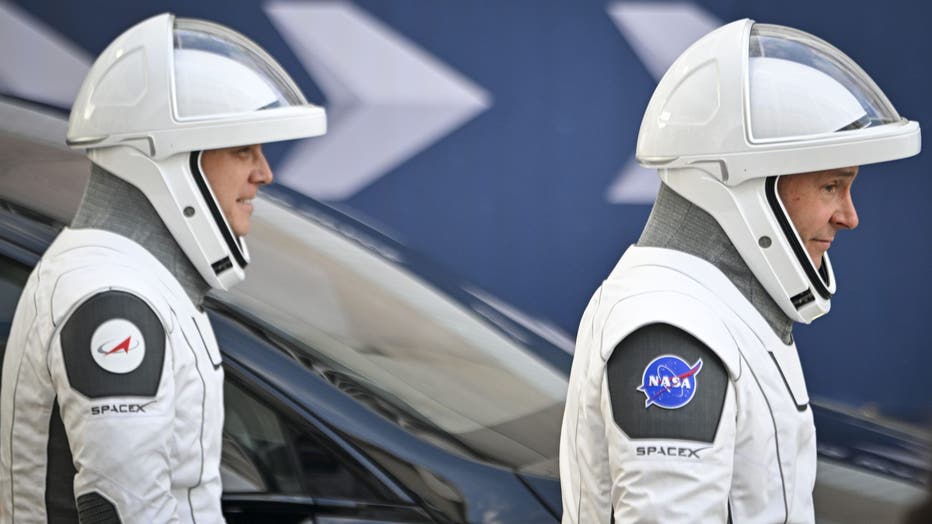
SpaceX Crew-9 Roscosmos cosmonaut Aleksandr Gorbunov (L) (Mission Specialist) and NASA Astronaut Nick Hague (Mission Commander) wear SpaceX spacesuits as they depart from the Neil A. Armstrong Operations and Control Building at Kennedy Space Center f
SpaceX’s Dragon capsule is configured to carry four people. Four astronauts were due to launch on the Crew 9 mission in August, but NASA delayed that launch so they could send only two astronauts, leaving two seats open for Wilmore and Williams when that mission’s rotation ends in February.
NASA astronaut Nick Hague, commander, and Roscosmos cosmonaut Aleksandr Gorbunov, mission specialist, were the two astronauts that launched with SpaceX.
READ MORE: NASA's SpaceX Crew-9 rocket successfully launched, headed to I.S.S.

IMAGES
VIDEO
COMMENTS
This new European Southern Observatory animation was created to celebrate the opening of the new ESO Supernova Planetarium in Germany. It begins from the hom...
Enjoy over 10 hours of space travel thru Galaxies past Comets, Supernovas and Nebulas. Infinite fields of stars fly past as you travel through interstellar s...
Experience what it's like to leave Earth, traveling to over 90,000 feet into the stratosphere. Never before has a 360 video been recorded at these heights - ...
Masi's video shows Webb in space, on its way to its final destination, a gravitationally stable point in space called L2, or the Earth-sun Lagrange point 2, about 1 million miles (1.5 million km ...
Here's how it works. A new 3D visualization from the James Webb Space Telescope takes viewers on a journey back in time to just after the Big Bang. In the video, over 5,000 galaxies can be seen ...
Earth from Space in 4K. Everything that happens on the International Space Station revolves around one thing: Earth, sixteen times a day! So for Earth Day, NASA offers a gift you can't get anywhere else with this leisurely view of our home planet, from 250 miles up, rendered in extraordinary ultra-high definition video. Hit play, relax and enjoy.
Turn on, tune in, and space out to relaxing music and stunning ultra high-definition visuals of our cosmic neighborhood. NASA explores the unknown in air and space, innovates for the benefit of humanity, and inspires the world through discovery. Explore the surface of Mars, fly through a solar flare, and bask in the glow of a Uranian sunset.
Travel back 390 million years after the big bang to the ancient Maisie's Galaxy in this stunning 3D visualization that showcases 5000 galaxies captured by the James Webb Space Telescope. It was created from CEERS (Cosmic Evolution Early Release Science) Survey data. Credits Visualization Frank Summers (STScI), Greg Bacon (STScI), Joseph DePasquale (STScI), Leah Hustak (STScI), Joseph Olmsted ...
NASA One Step Closer to Fueling Space Missions with Plutonium-238. 2 min read. The recent shipment of heat source plutonium-238 from the U.S. Department of Energy's (DOE's) Oak Ridge National Laboratory to its…. Article. 1 2 3 … 12 Next.
History. Apollo mission videos — Videos commemorating the 50th anniversary of the crewed Apollo missions.. Marshall Remembers Apollo — detailed, technical interviews with employees at NASA's Marshall Space Flight Center, where the Saturn rockets that sent astronauts to the Moon were built.. Human Space Flight. Artemis: NASA's Moon to Mars Plans — We are NASA, and we are going to the ...
Where Are They Now? Both Voyager 1 and Voyager 2 have reached "interstellar space" and each continue their unique journey deeper into the cosmos. In NASA's Eyes on the Solar System app, you can see the actual spacecraft trajectories of the Voyagers updated every five minutes.
Space Travel. The path to the Moon, Mars, and beyond requires technologies to get us where we need to go quickly, safely and efficiently. Space travel includes launch and in-space propulsion systems, cryogenic fluid management, and thermal management, as well as navigation and landing systems to get our supplies, equipment, and robotic or human ...
Luckily for all of us, NASA addresses these in a recently-released animated video that covers all the basics of interstellar travel! To summarize, according to the immutable laws of physics (specifically, Einstein's Theory of Special Relativity), there's no way to reach or exceed the speed of light. This means that if you're going to attempt ...
Andrew Feinberg. White House Correspondent. Nasa has shared its vision for human space exploration in the future in a new sci-fi video. The minute-long 'Visions of the Future' short shows ...
Make sure you're physically and mentally fit. "I think people should treat this as their Olympics or Super Bowl. This is a really big life experience, and though you don't need to be an Olympic ...
Watch this video ad-free on Nebula: https://nebula.tv/videos/realscience-why-we-need-to-genetically-modify-astronautsNew streaming platform: https://watchneb...
Everything you need to know about space travel (almost) - BBC Science Focus Magazine.
Tumbling through space at 57,000mph (90,000 kmph), the object is thought to have come from the direction of Vega, an alien star that resides 147 trillion miles (237 trillion km) away.
SpaceX's Falcon 9 rocket, with the Crew Dragon spacecraft atop it, is at the launchpad at Cape Canaveral Space Force Station in Florida ahead of the Crew-9 launch to the International Space Station.
NASA's Orion space capsule is not a place you would describe as "roomy." ... Over the course of 10 days, the crew will travel to the moon, swing around its orbit, and slingshot back to Earth
Hurricane Helene's landfall along the Florida coast was documented by several NOAA satellites Thursday night. Watch this video to see some really fascinating angles captured from space. - Videos ...
While in orbit, NASA astronauts Robert Behnken and Douglas Hurley captured stunning views of our home planet Earth.The duo made history May 30 when they laun...
In this image released by NASA, NASA astronauts Suni Williams and Butch Wilmore, both Expedition 71 Flight Engineers, make pizza aboard the International Space Station's galley located inside ...
Mixkit Free Stock Video Space Light Light traveling in space, 3D animation Premium Download - 1080p Version for commercial use Future-proof your work with an Envato subscription. Get this video, plus millions of other premium assets, all covered by a lifetime commercial licence.
SpaceX has launched a rescue mission for the two stuck astronauts at the International Space Station. ... Got a cool video of a ghost? Ring holds contest with $100K prize ... Get ready to travel ...
2) Magnetic Explosions. Huge, invisible explosions are constantly occurring in the space around Earth. These explosions are the result of twisted magnetic fields that snap and realign, shooting particles across space. Download related video from NASA Goddard's Scientific Visualization Studio. Magnetic fields are everywhere in space ...
If your last name is spelled "McDonald" but printed as "Mc Donald," (with a space), make sure you enter your name as "Mc Donald"(with the space included) on the application. If your last name is spelled "Smith-Jenkins" (with a hyphen) and printed in your most recent passport with the hyphen, try entering your name as "Smith Jenkins ...
• Helene disrupts travel and delivery services: Helene has caused numerous disruptions to travel and delivery services. Several Amtrak trains arriving or departing Florida and Georgia have been ...
SpaceX's Dragon capsule is configured to carry four people. Four astronauts were due to launch on the Crew 9 mission in August, but NASA delayed that launch so they could send only two ...
Enjoy a ride on the TTA PeopleMover at the Magic Kingdom, with the lights on inside of Space Mountain! This was filmed on September 25th 2024 from around 3pm...